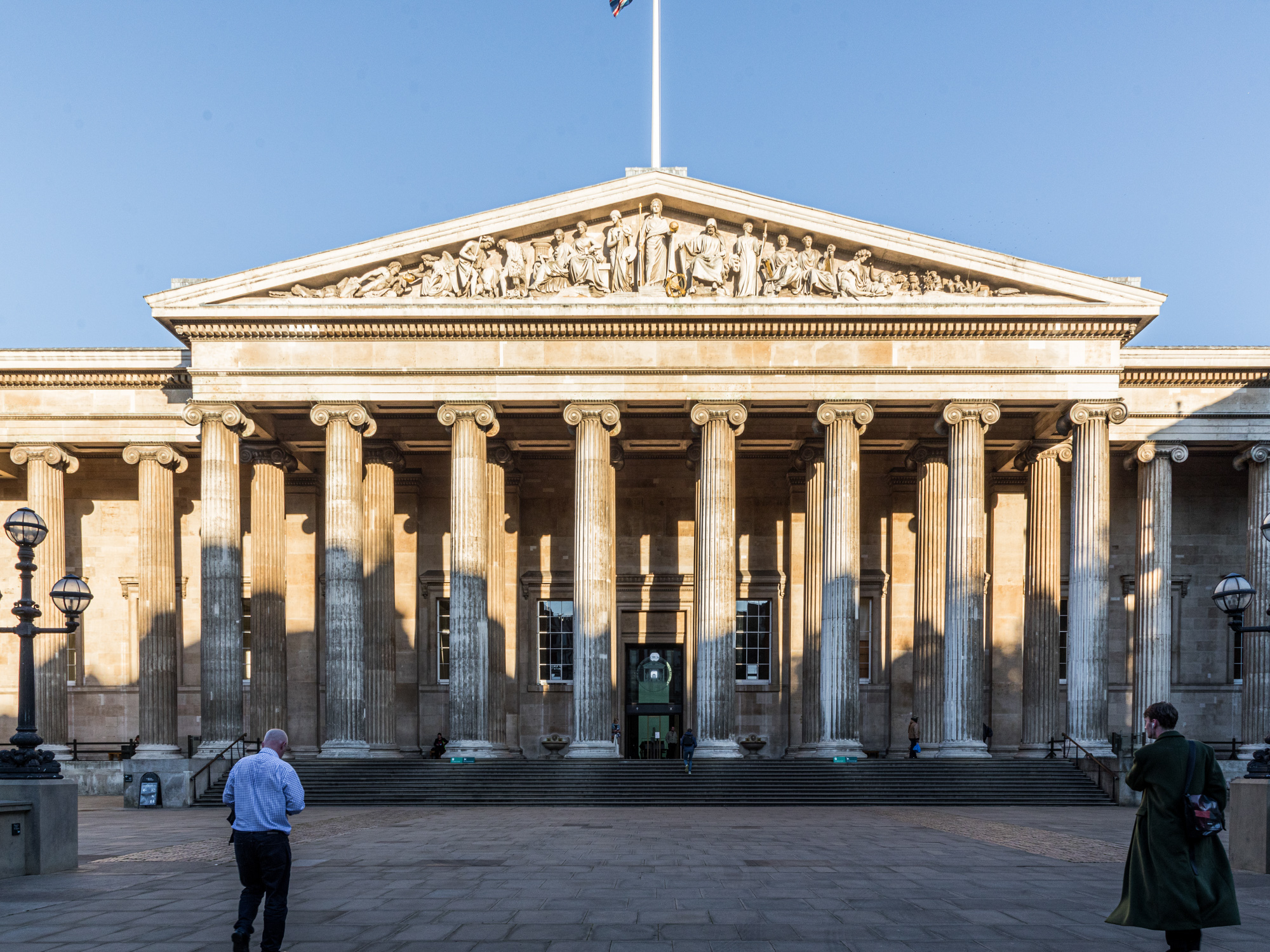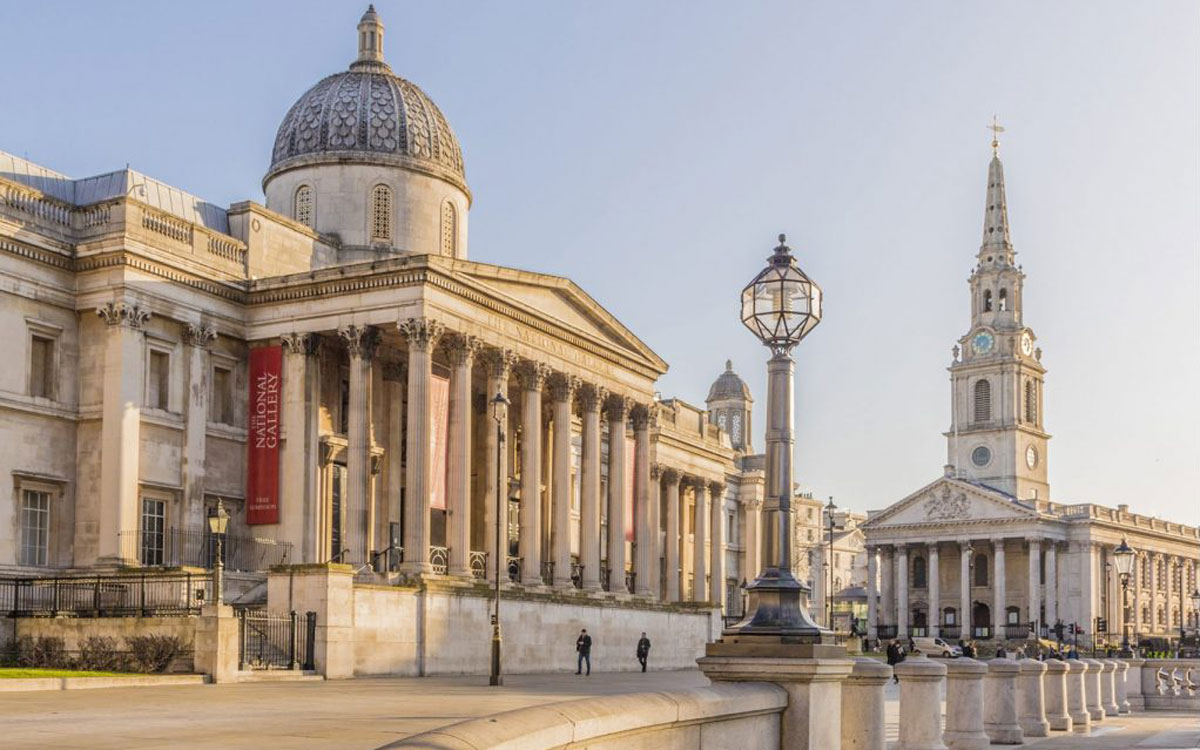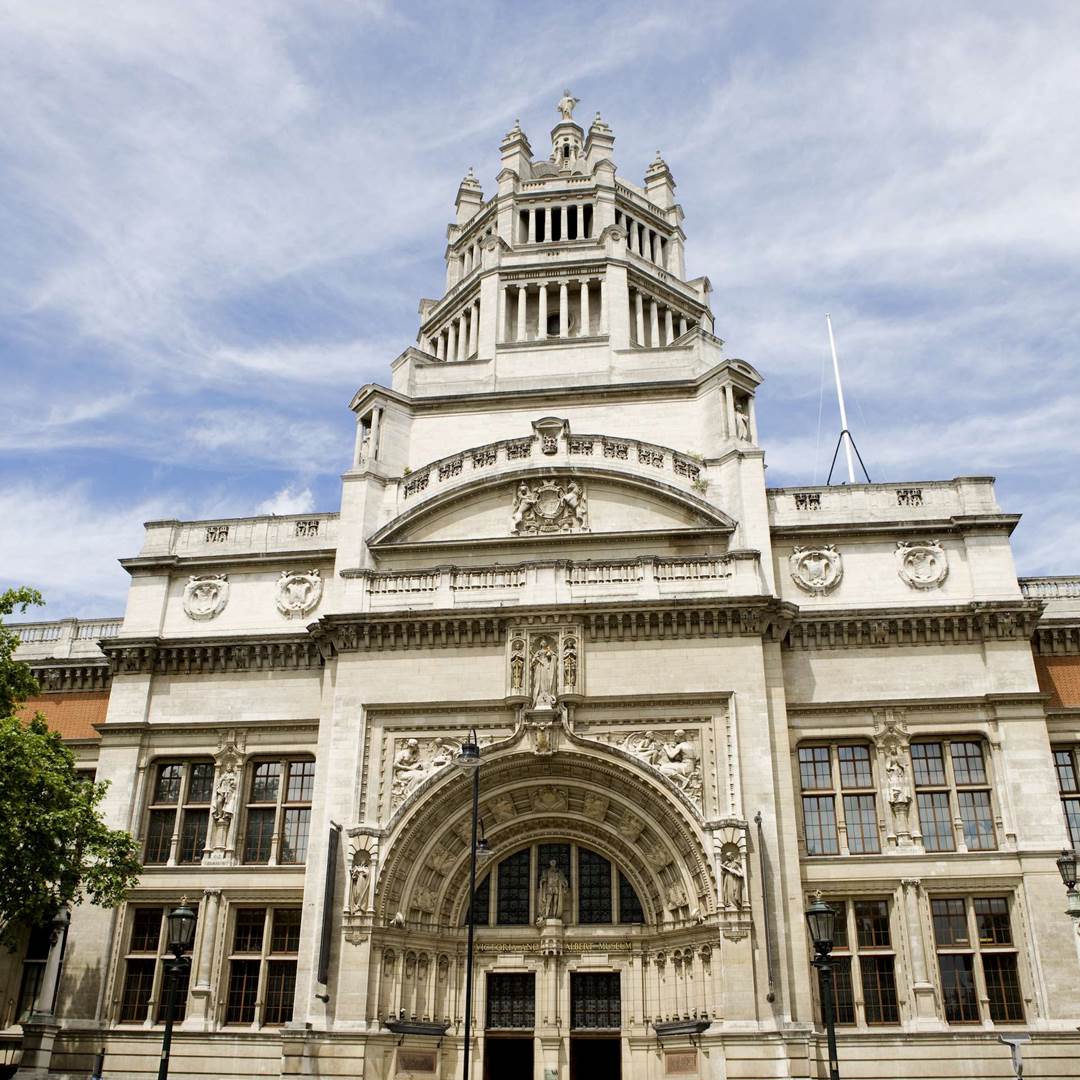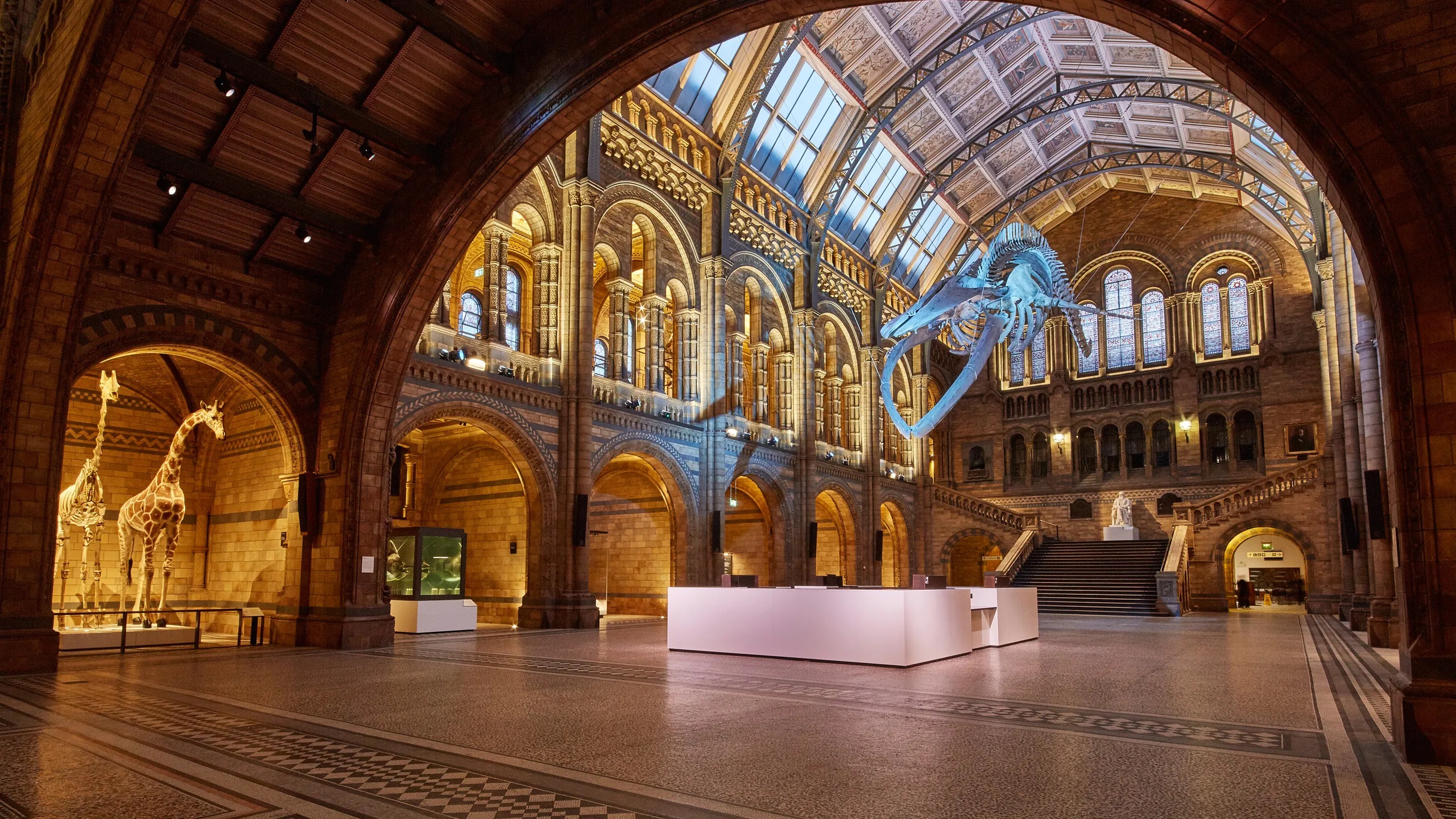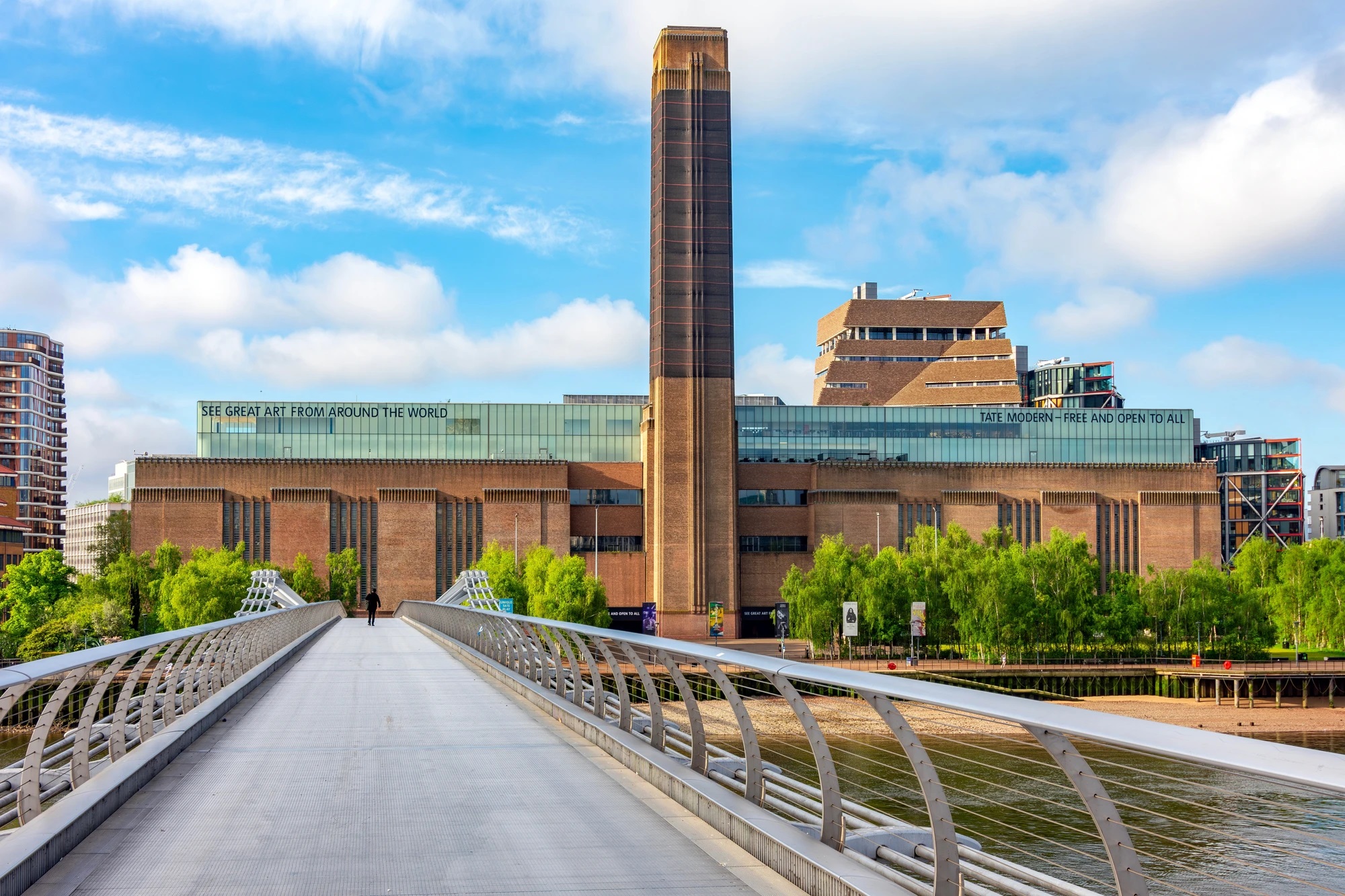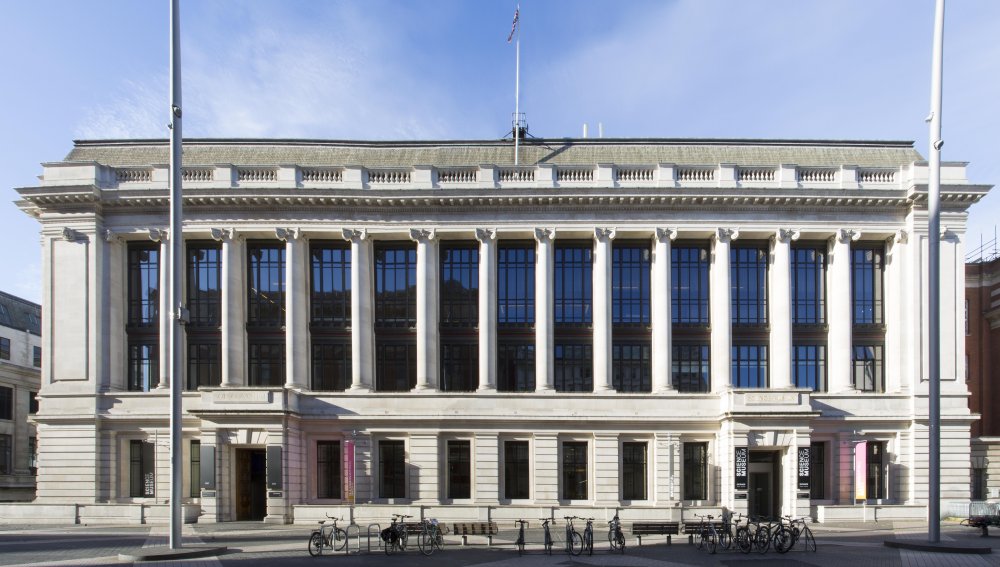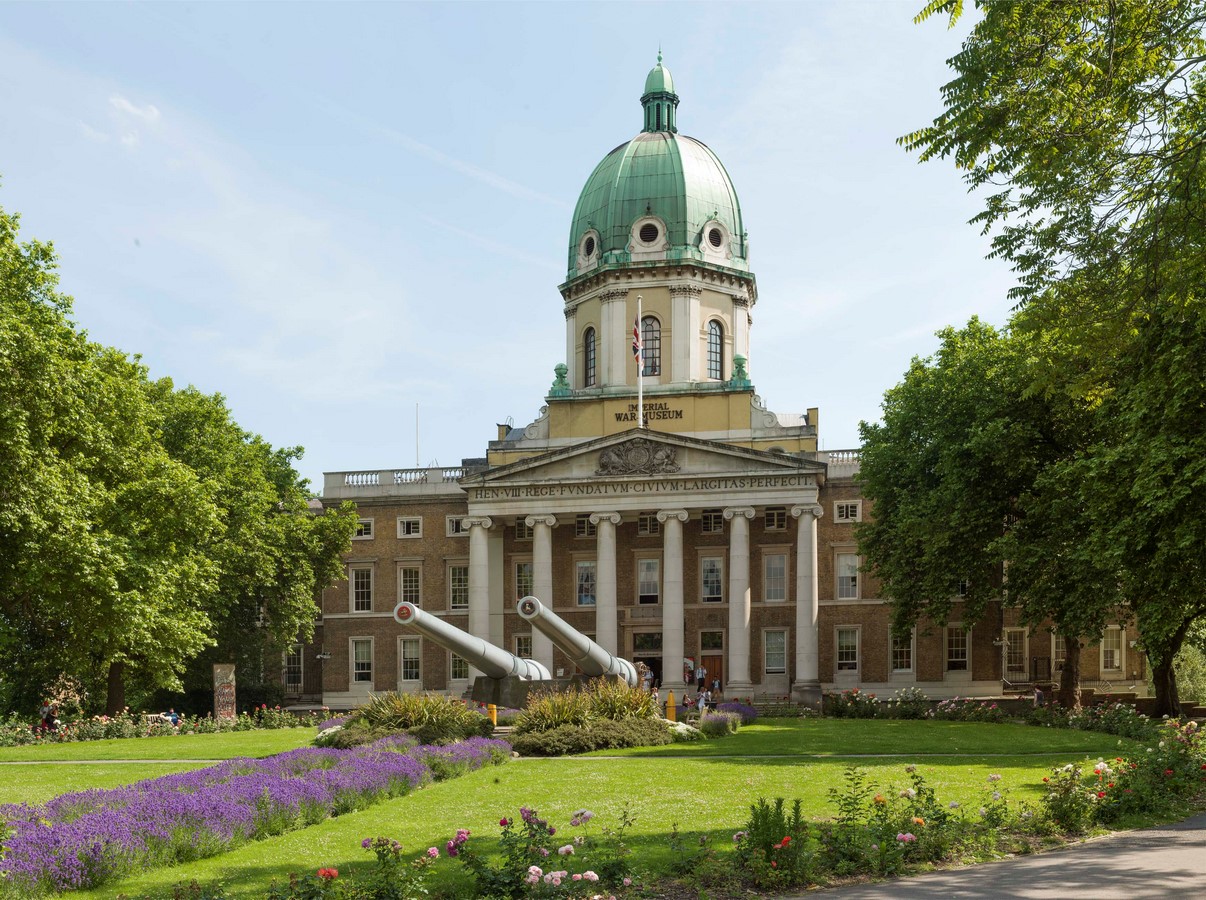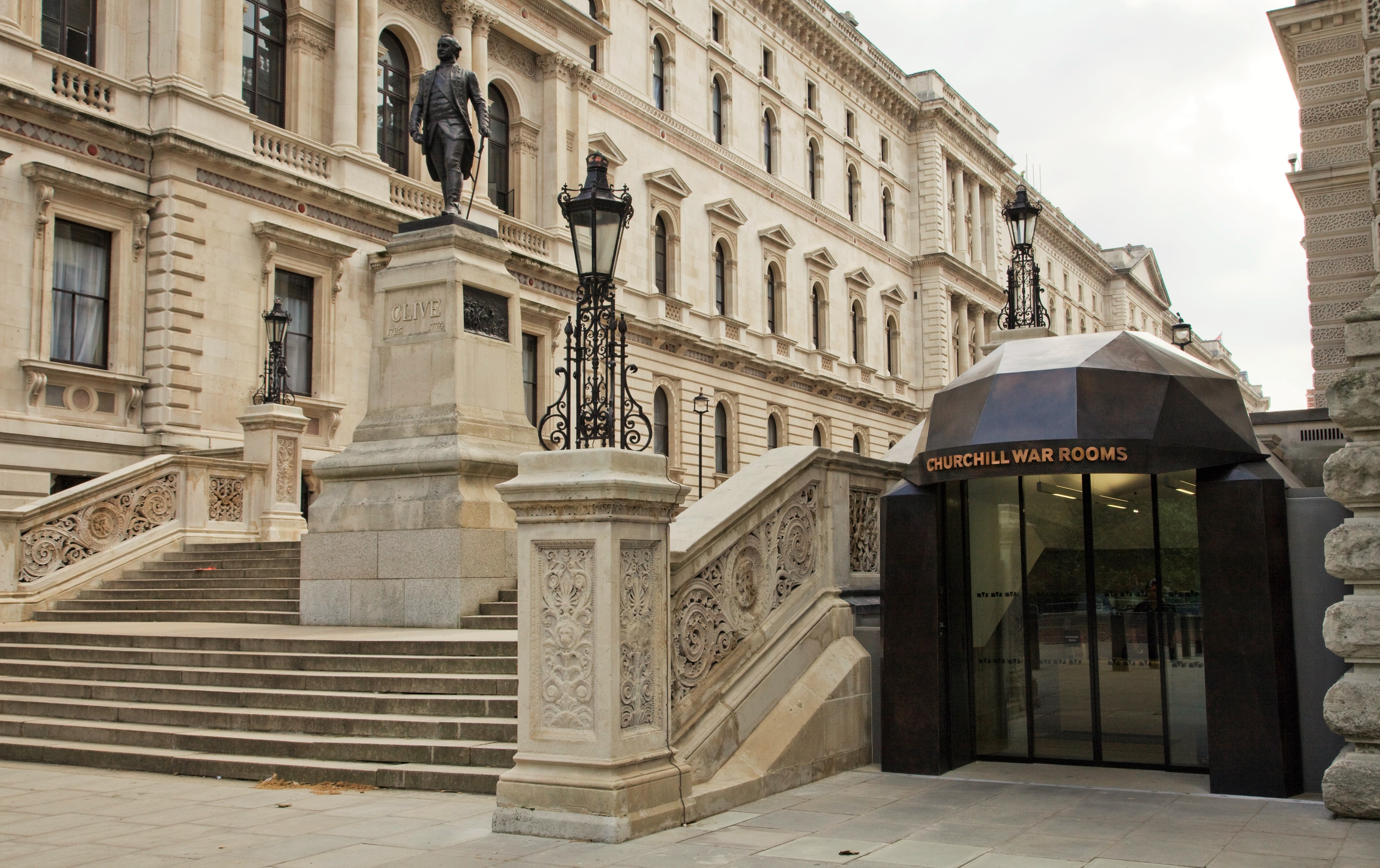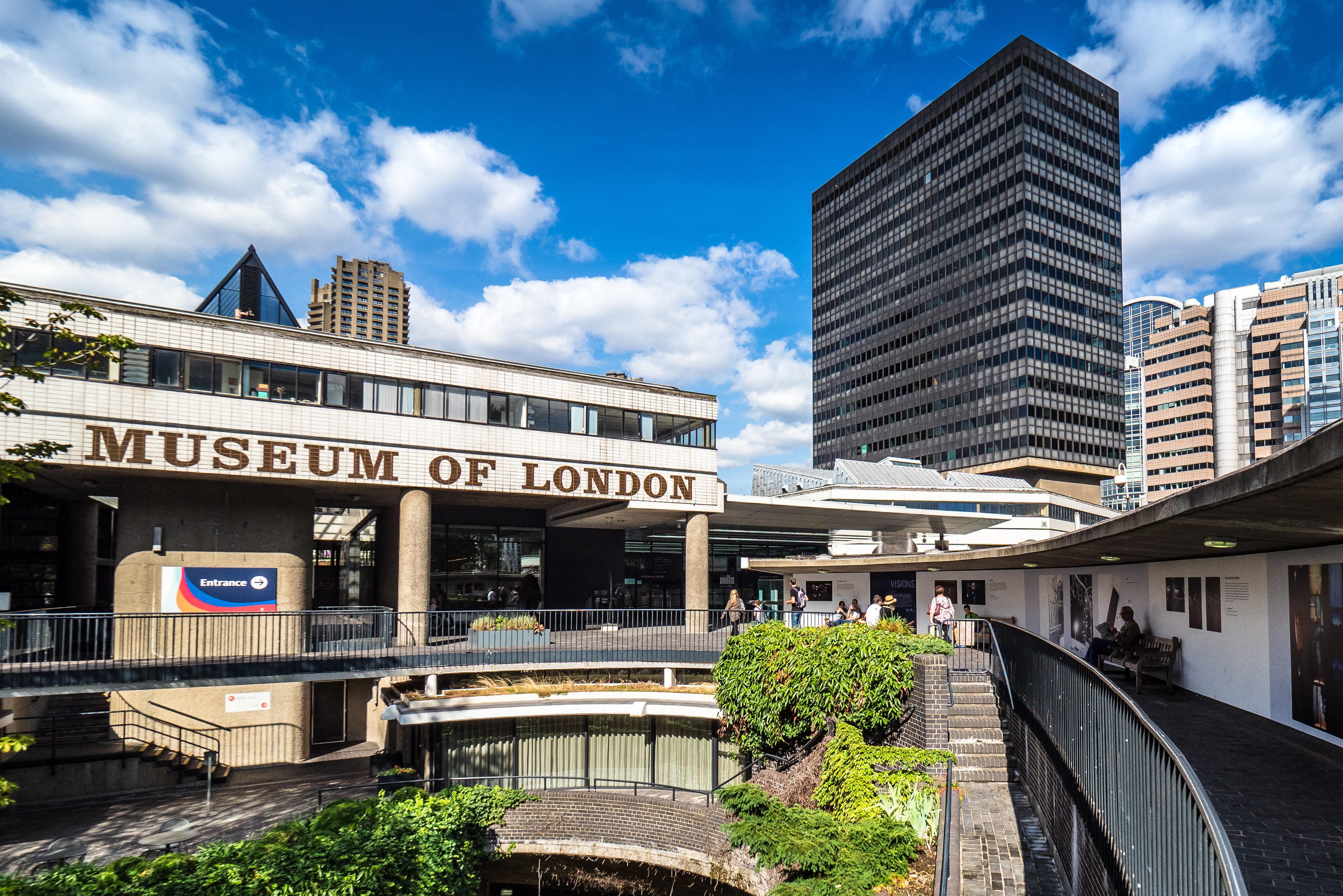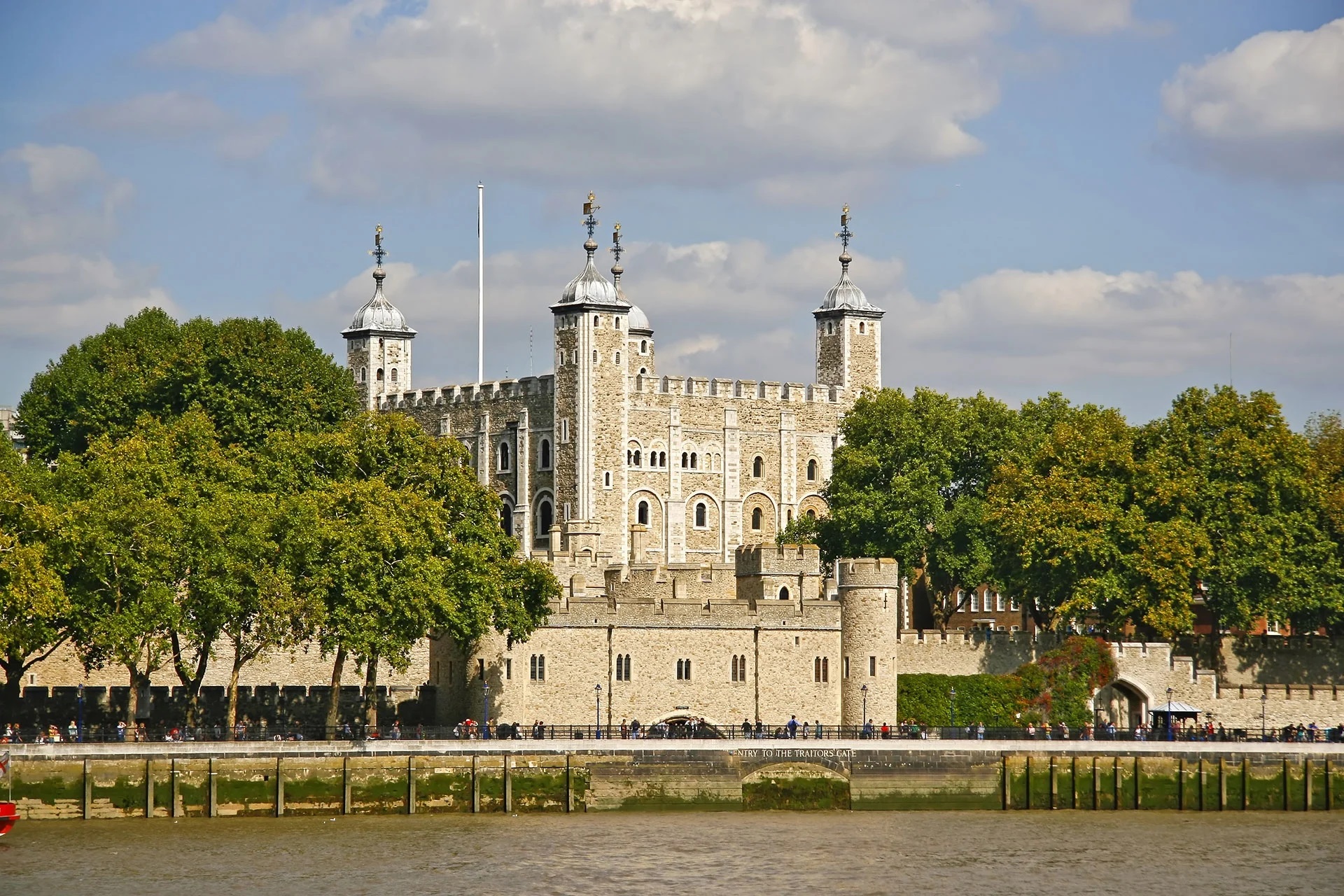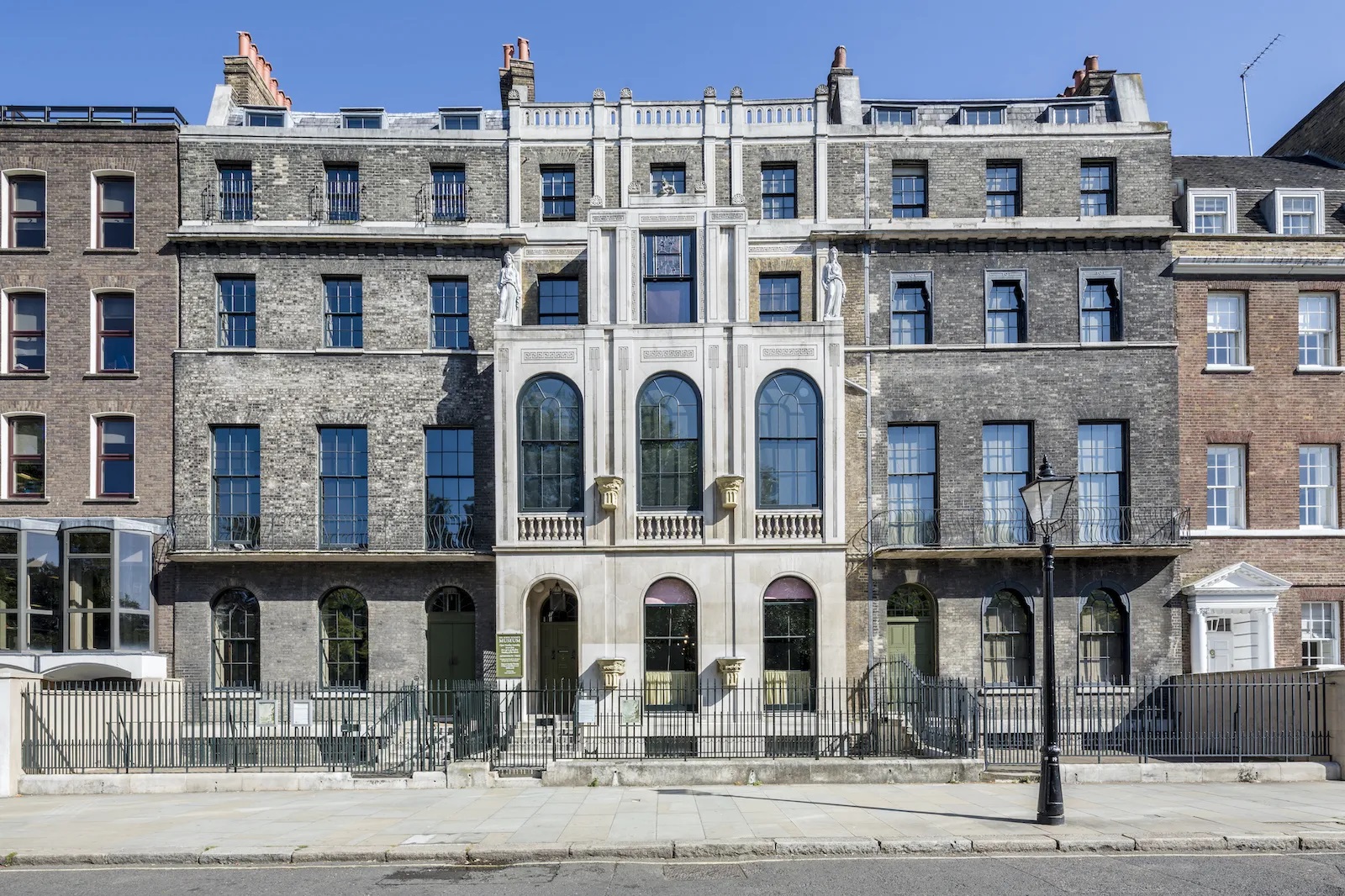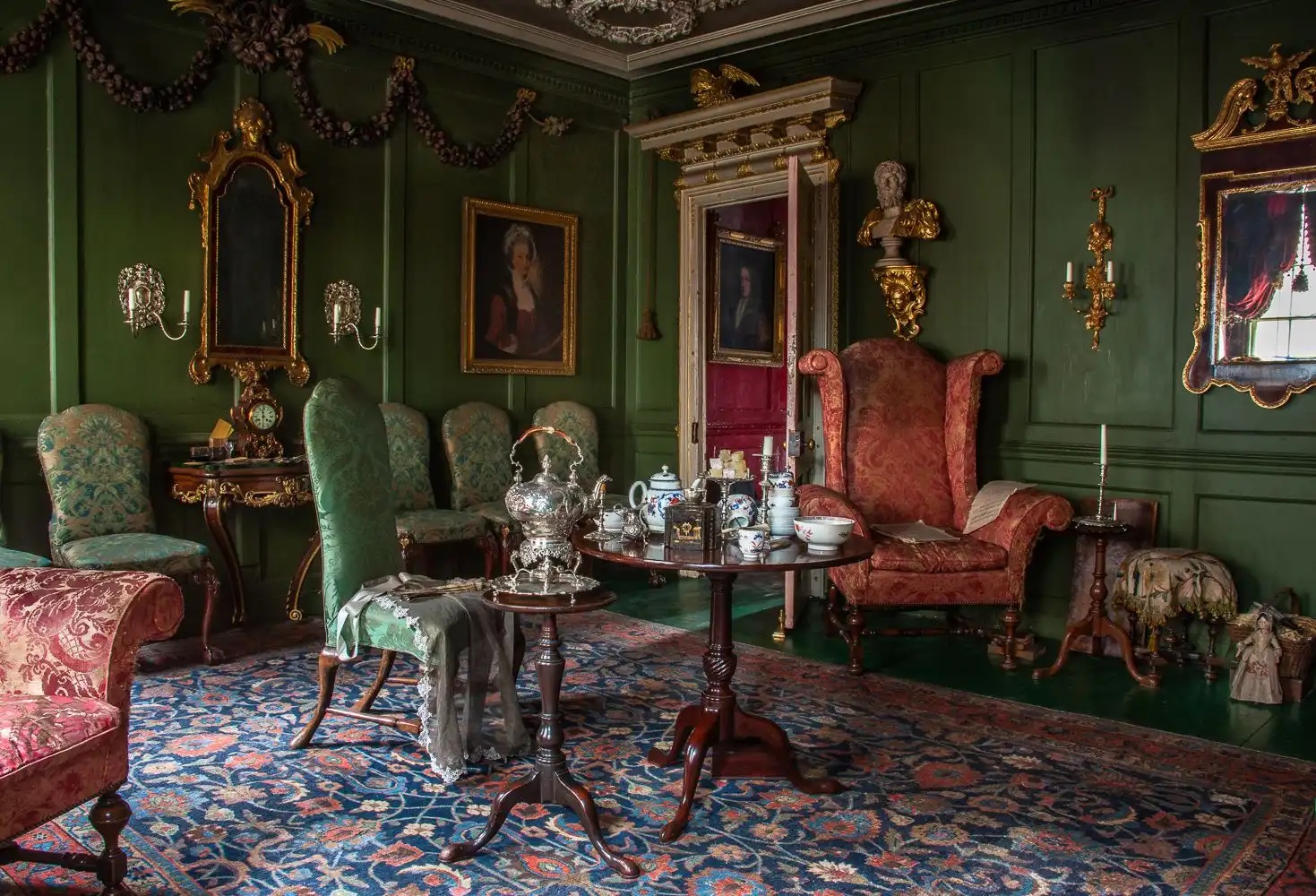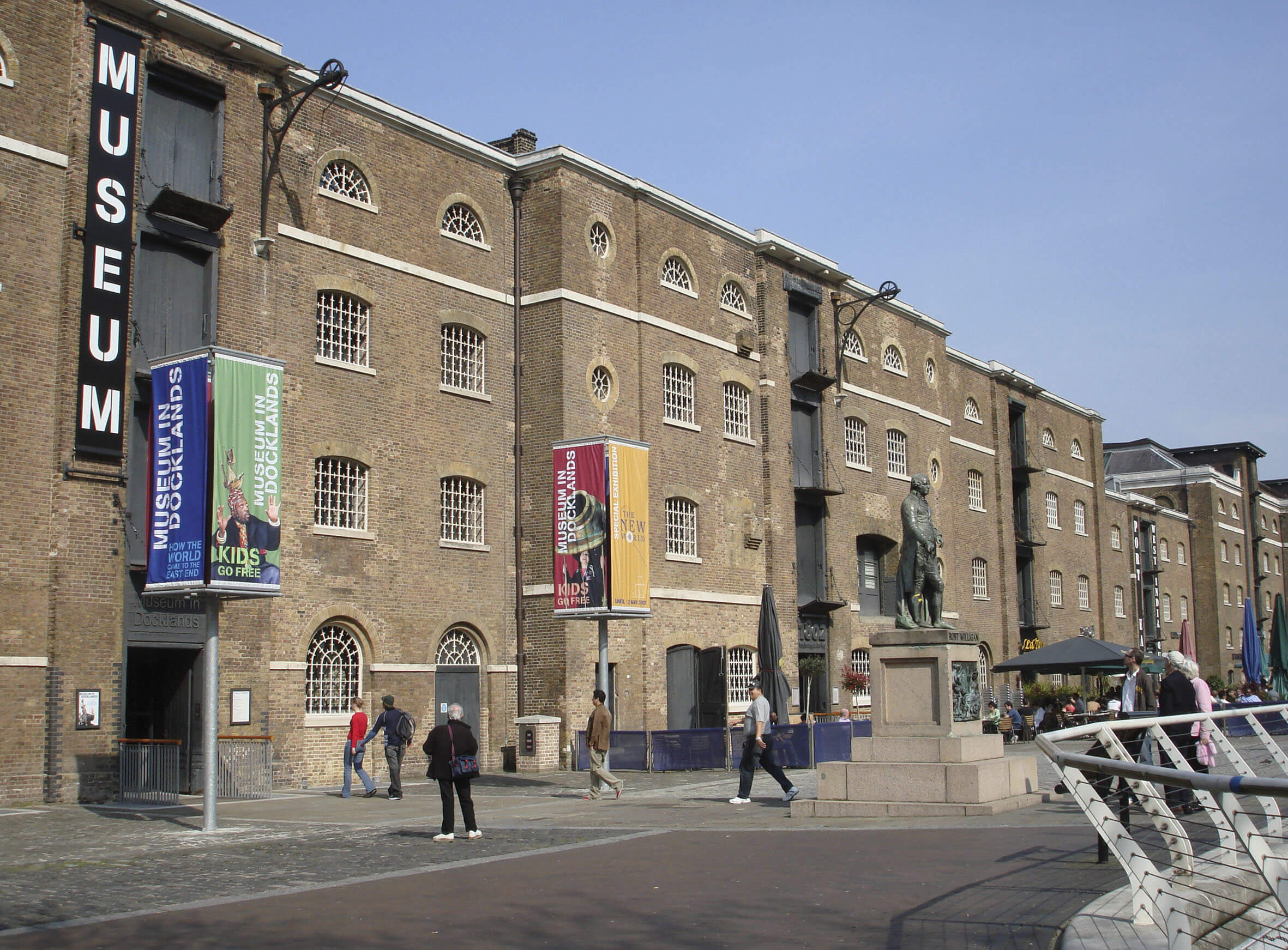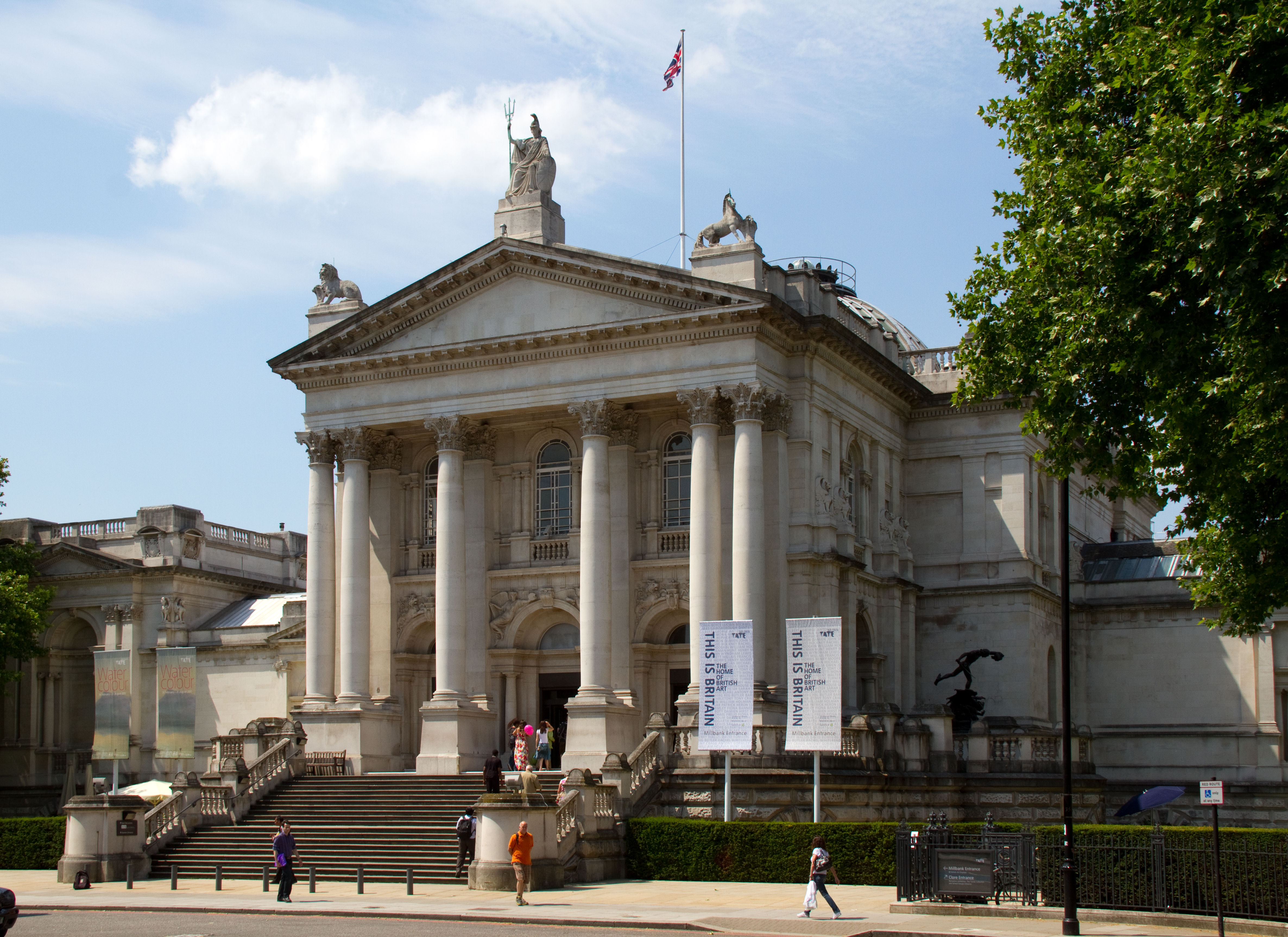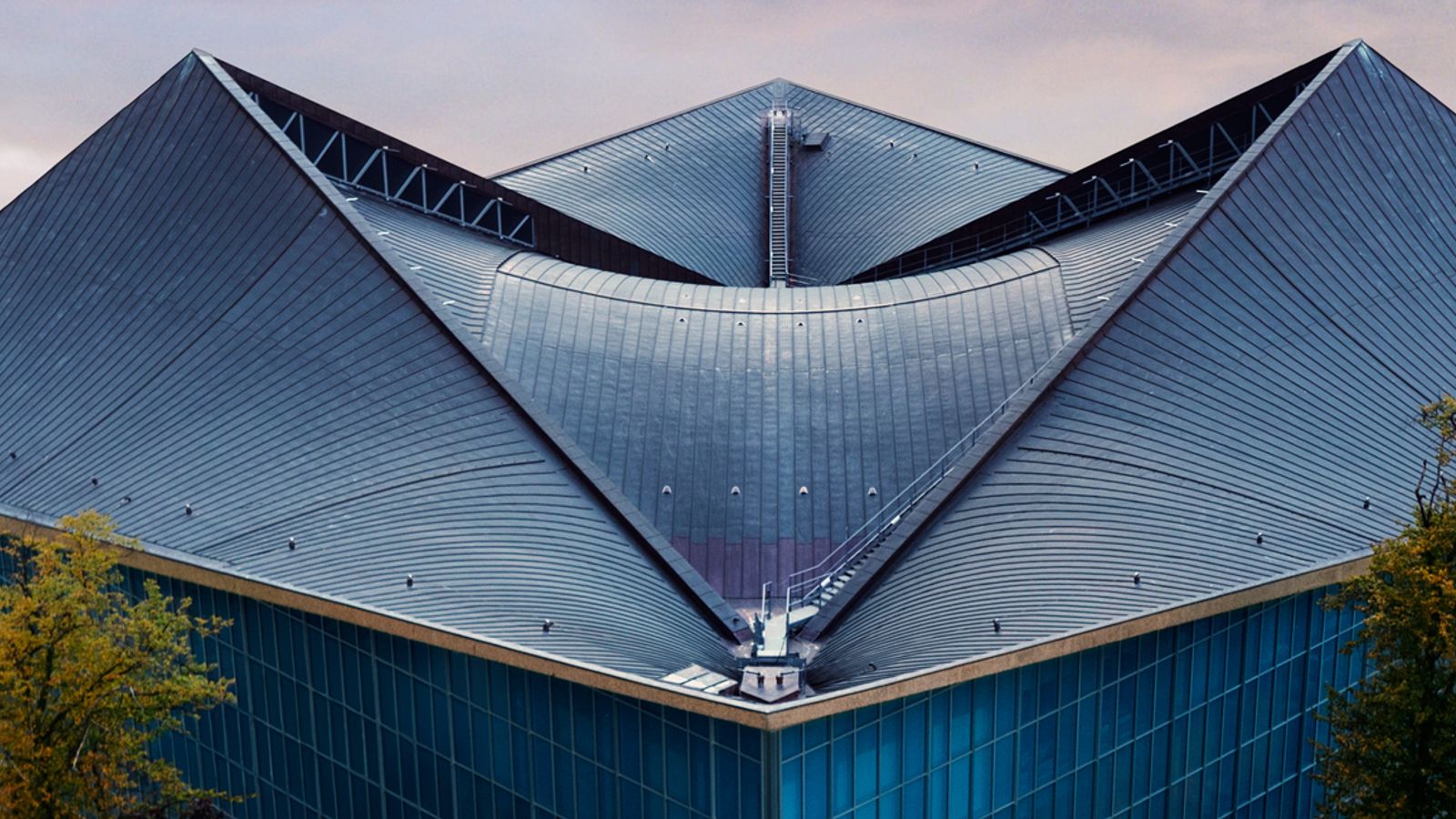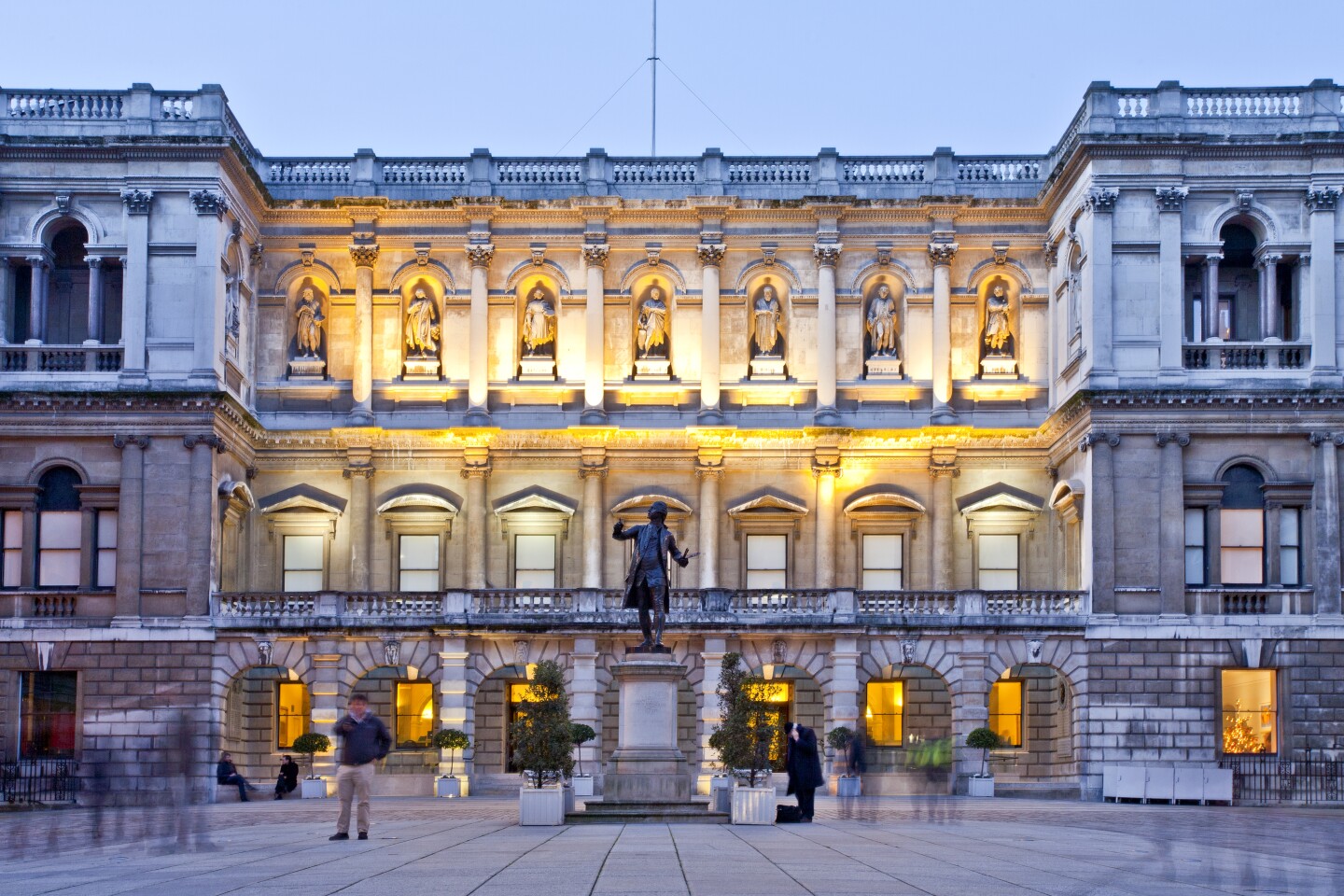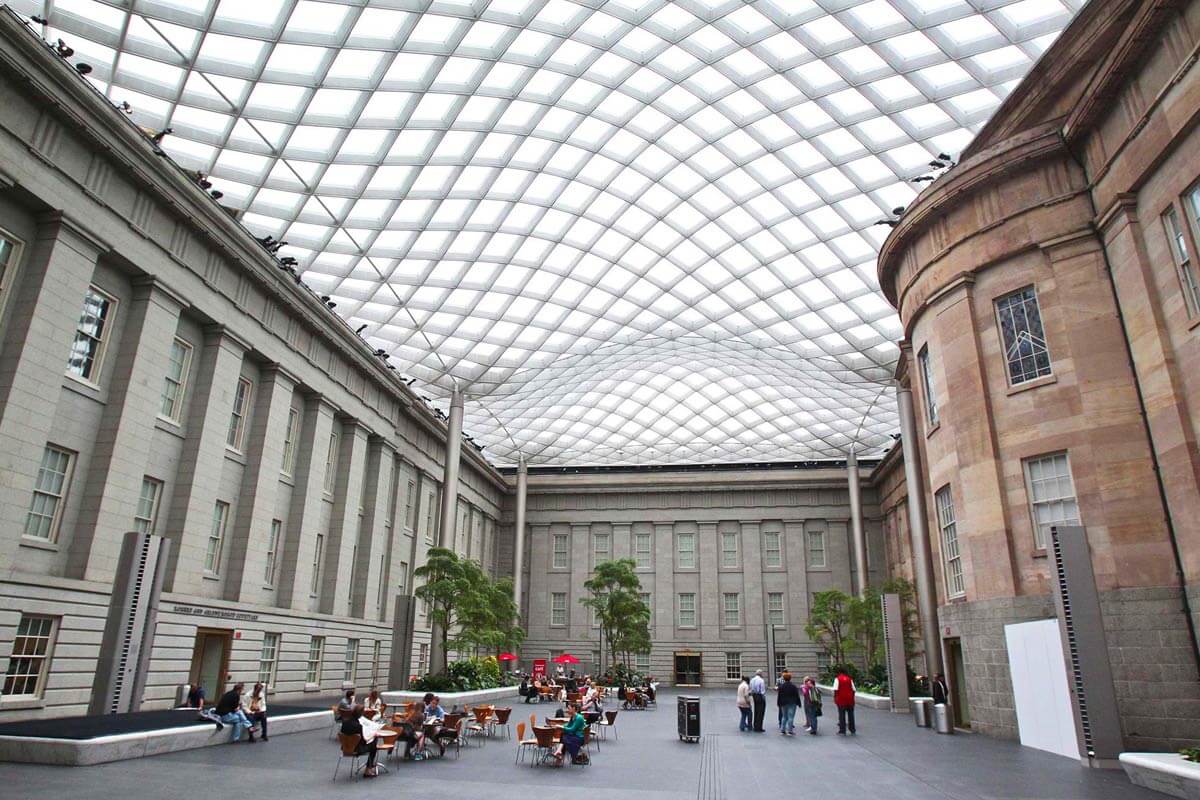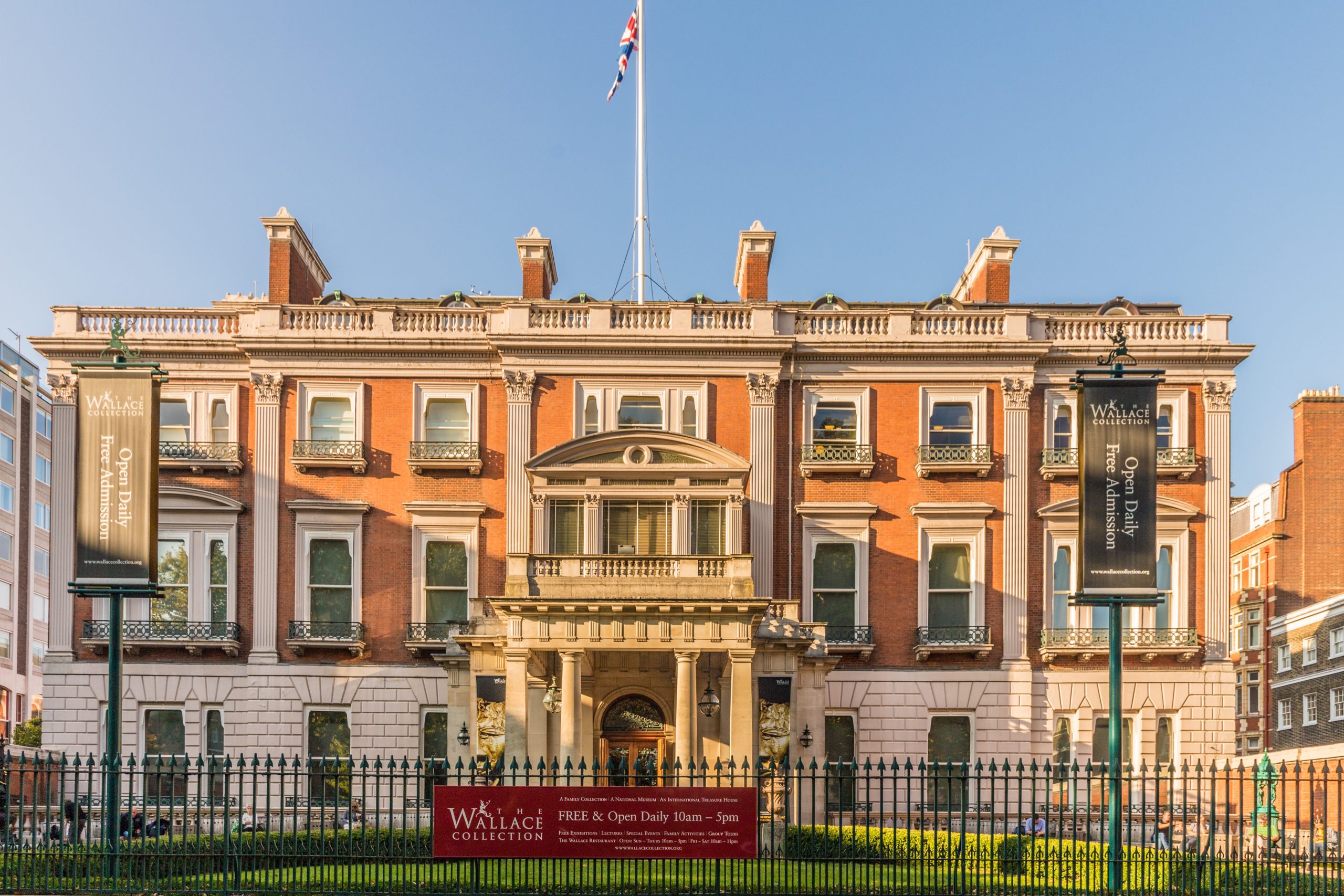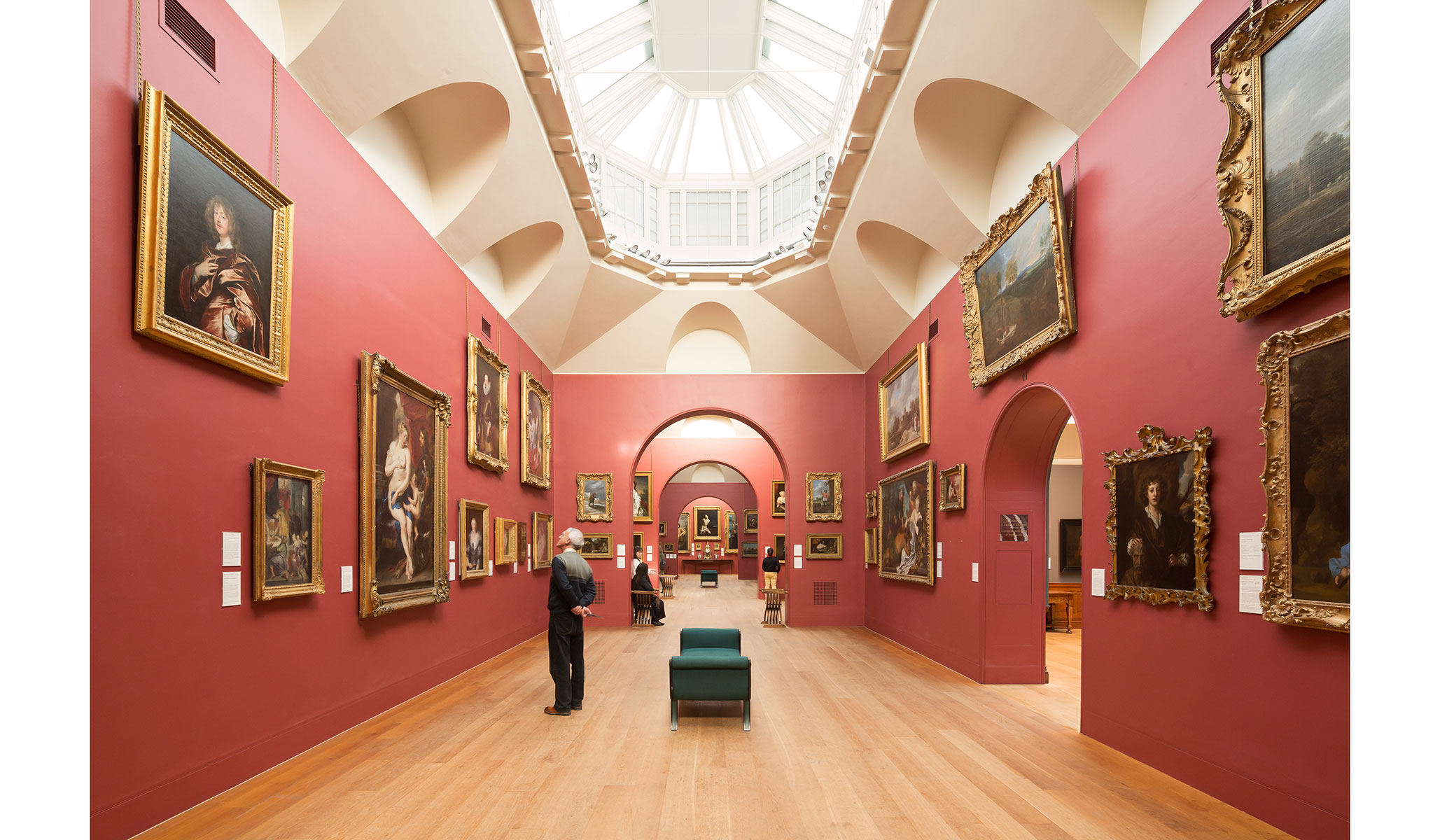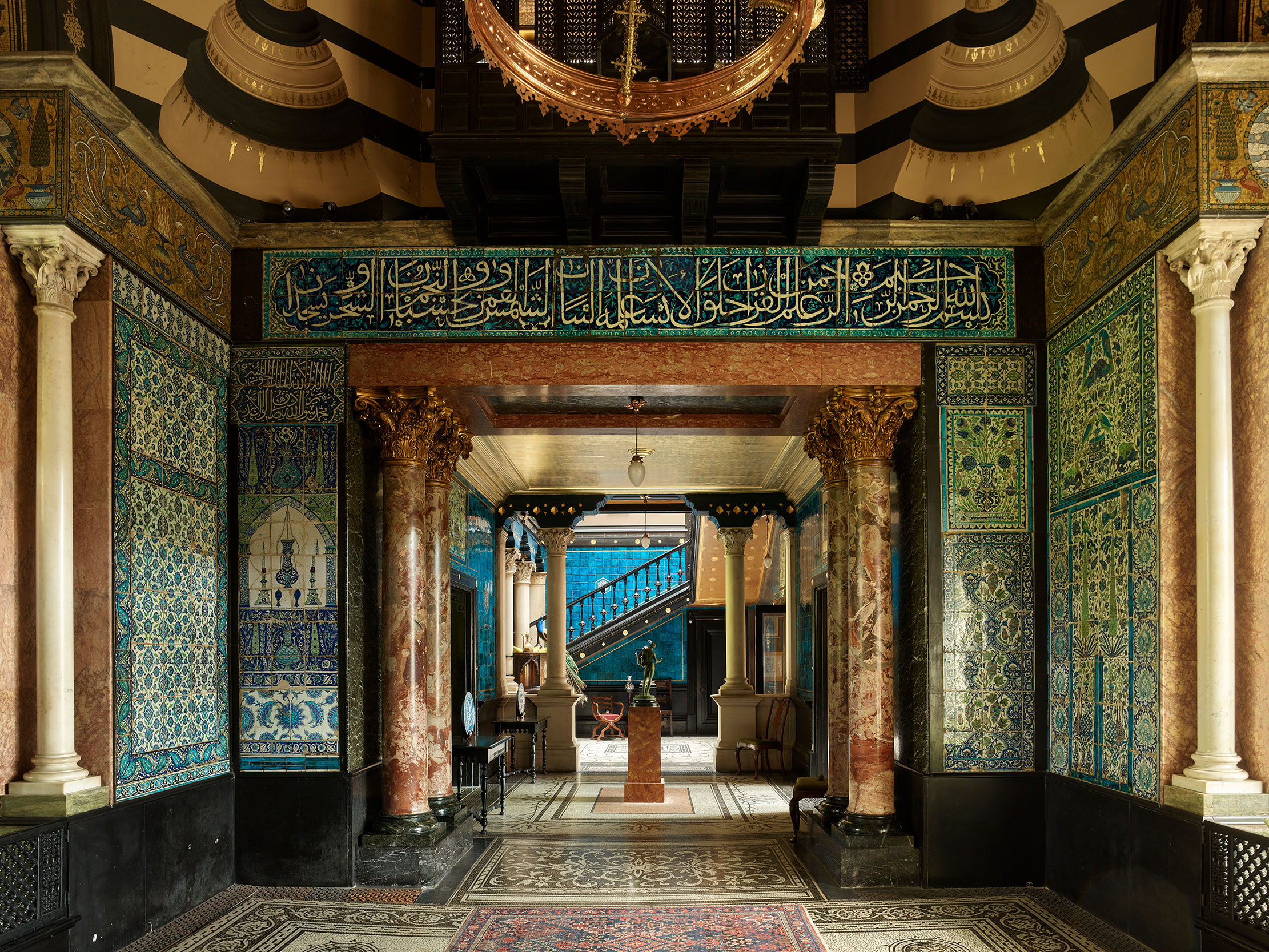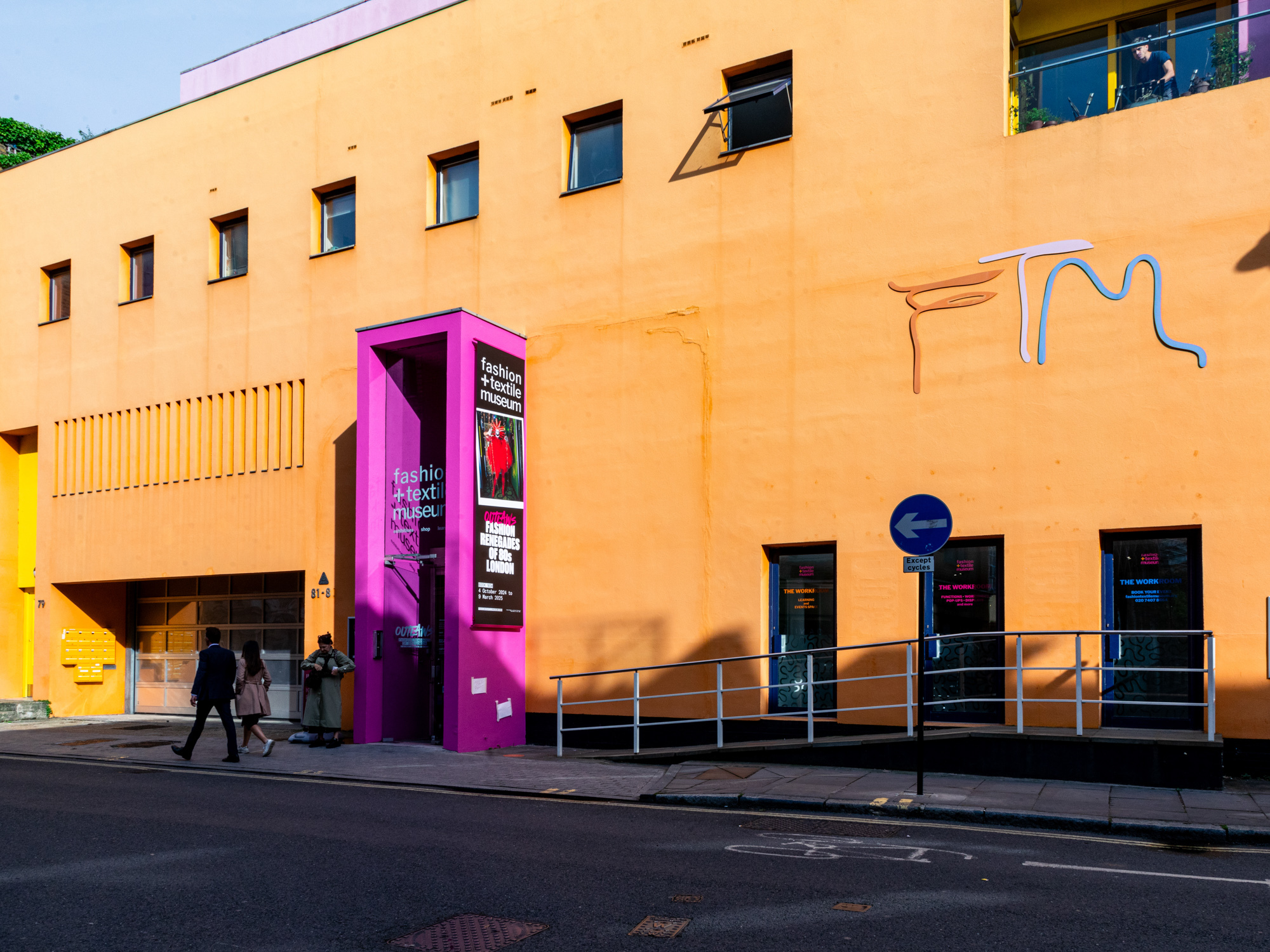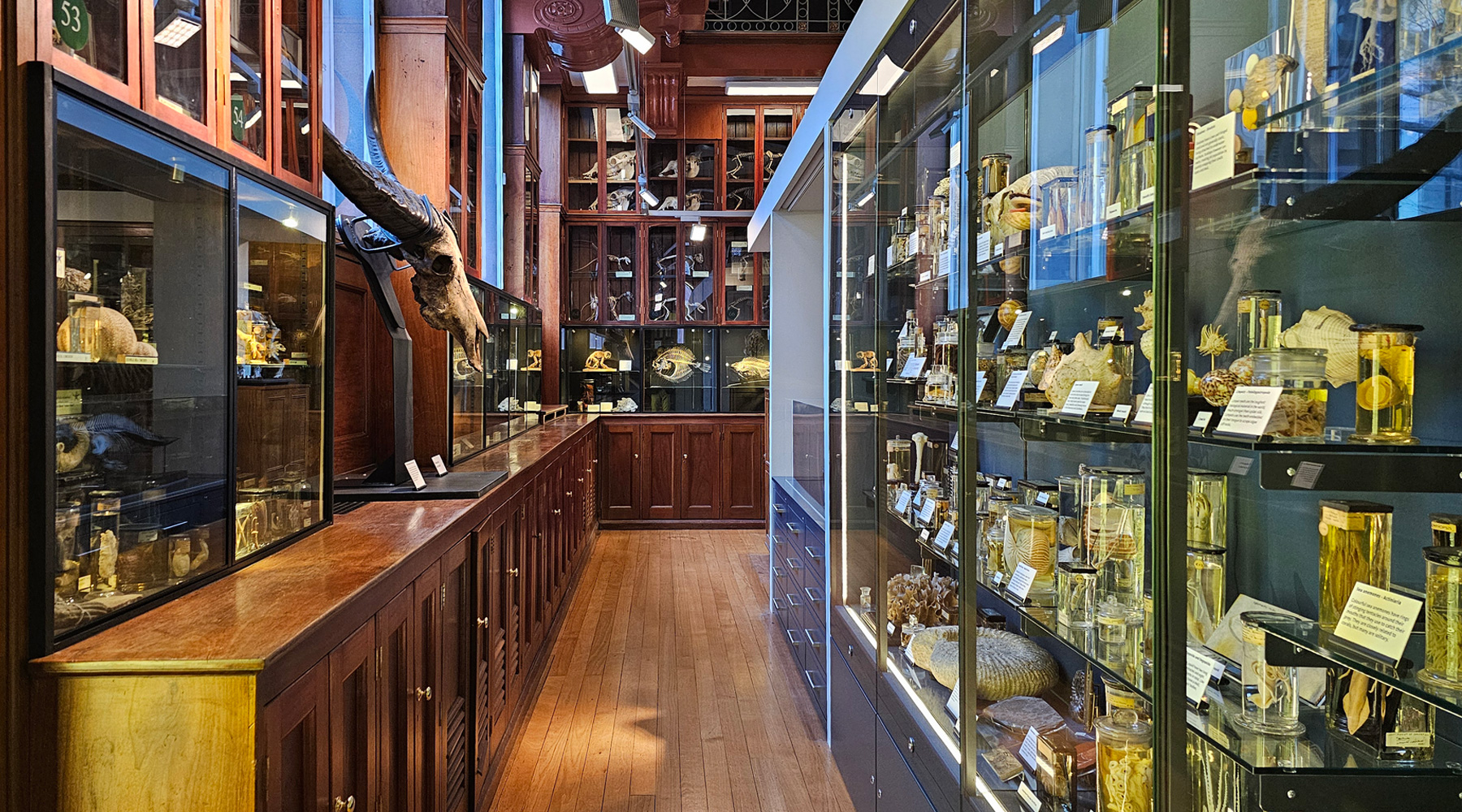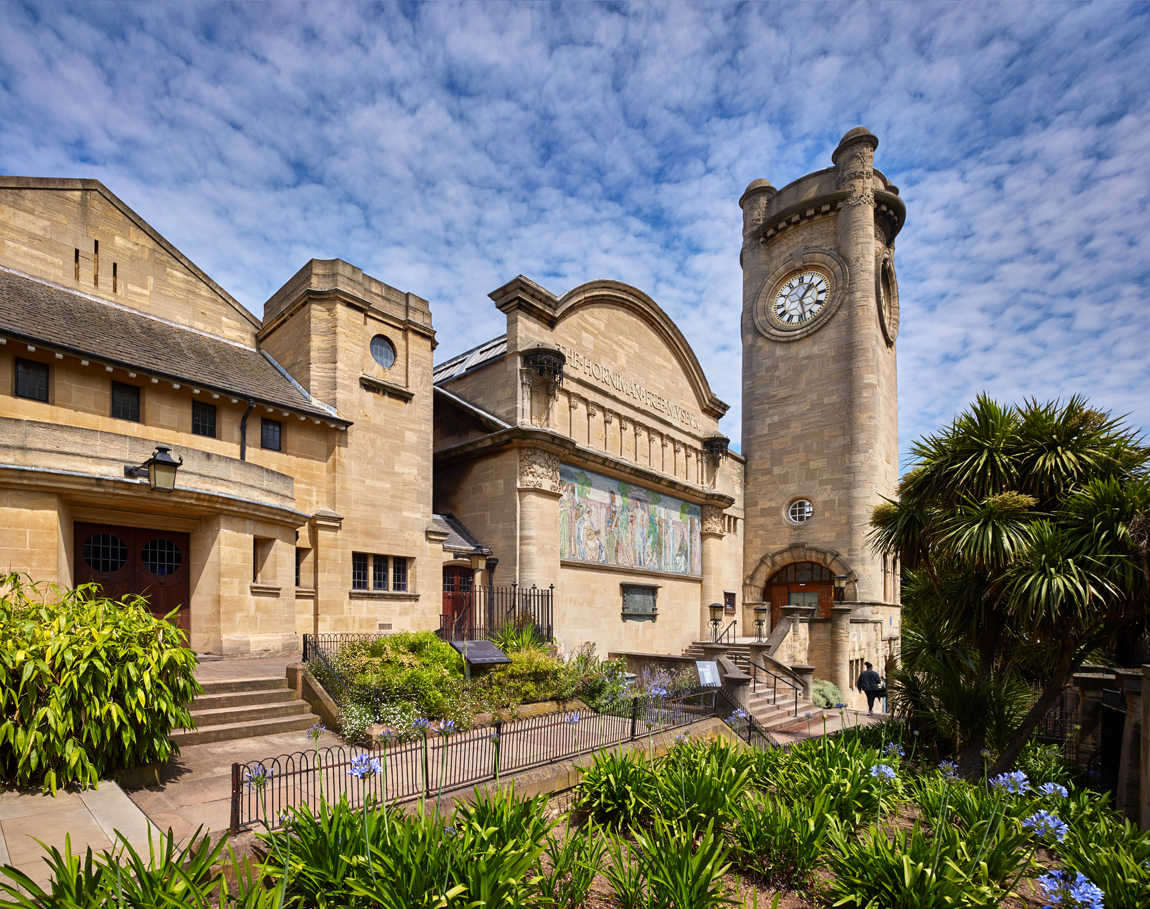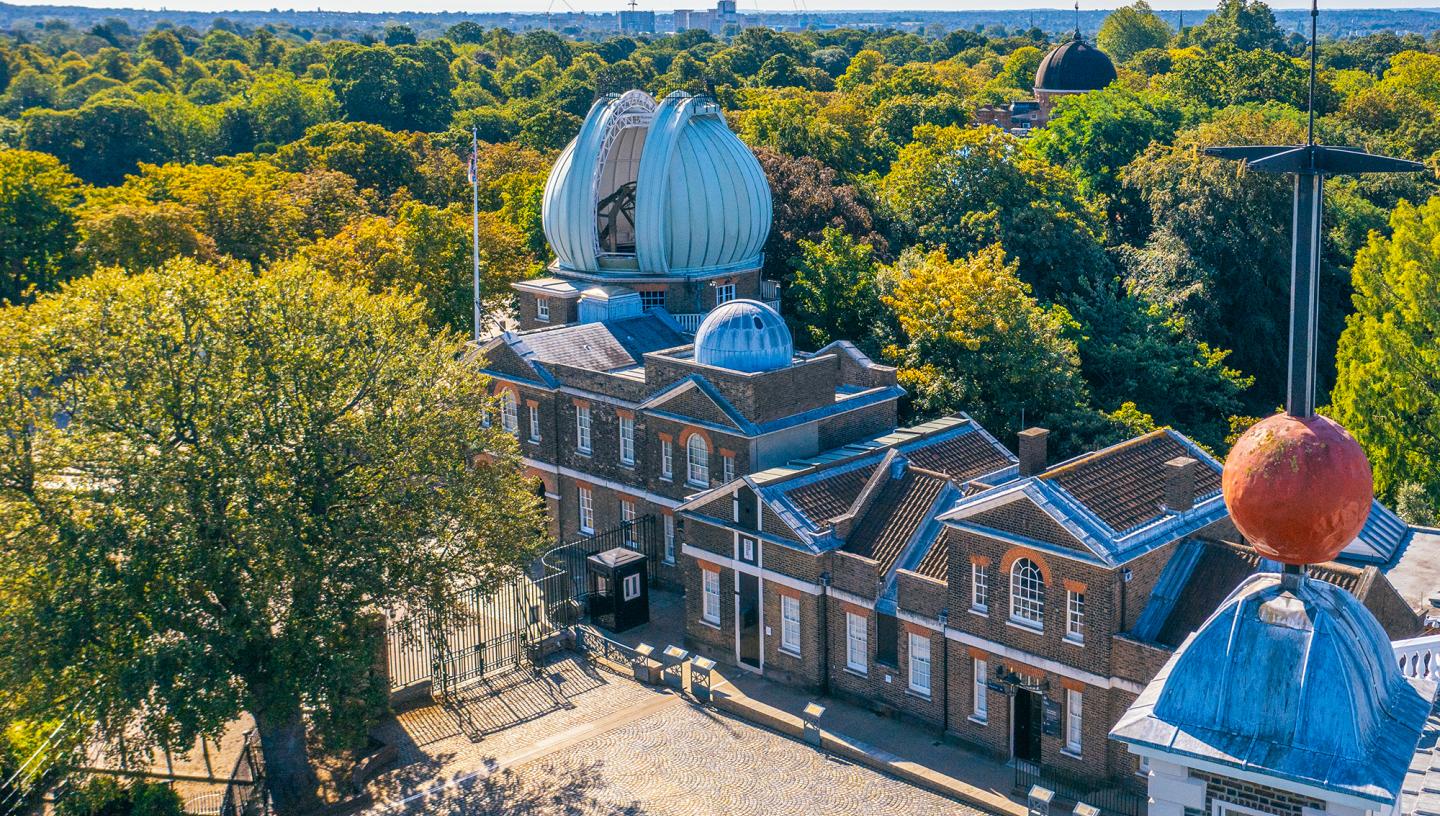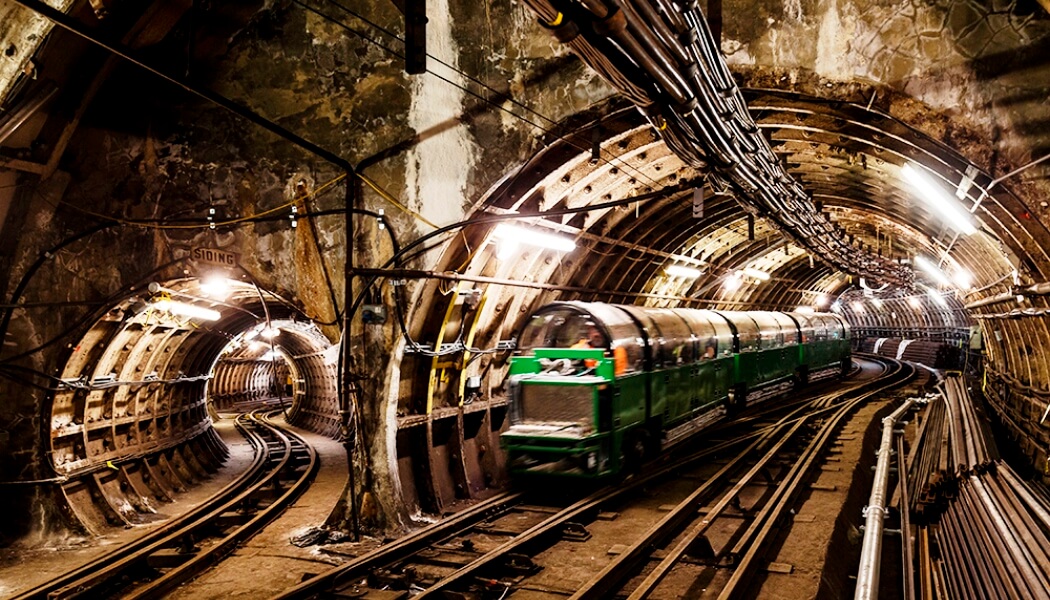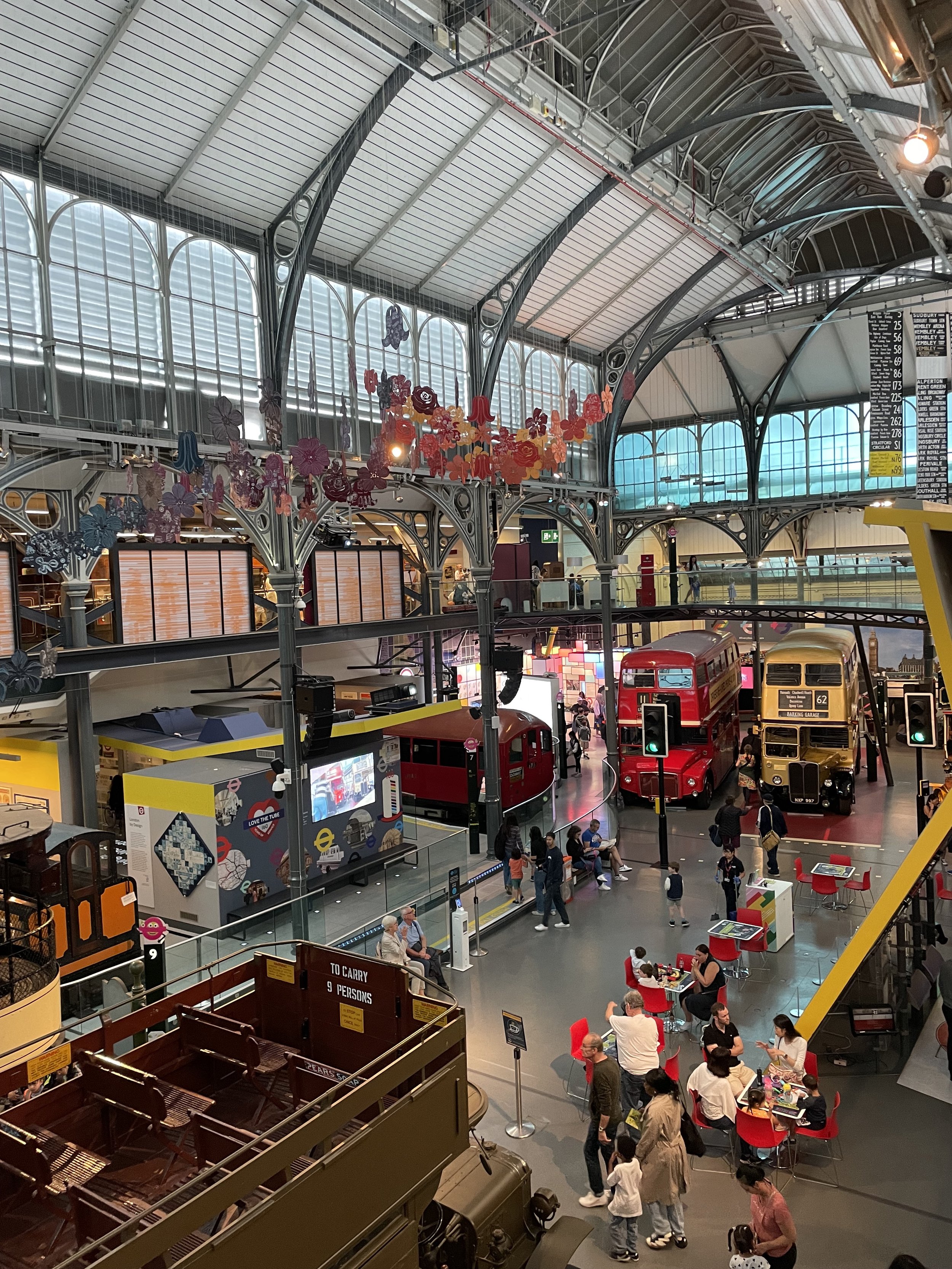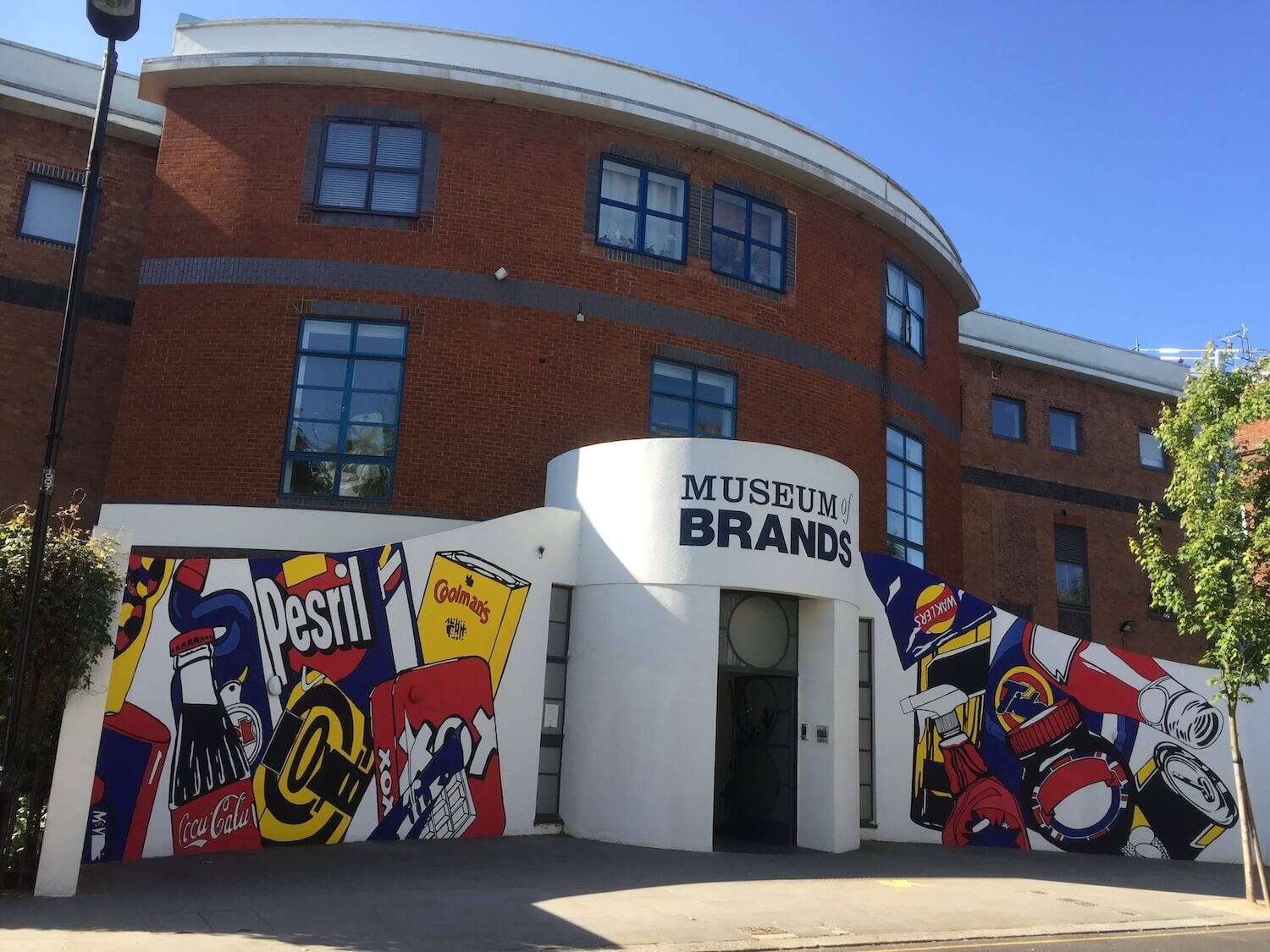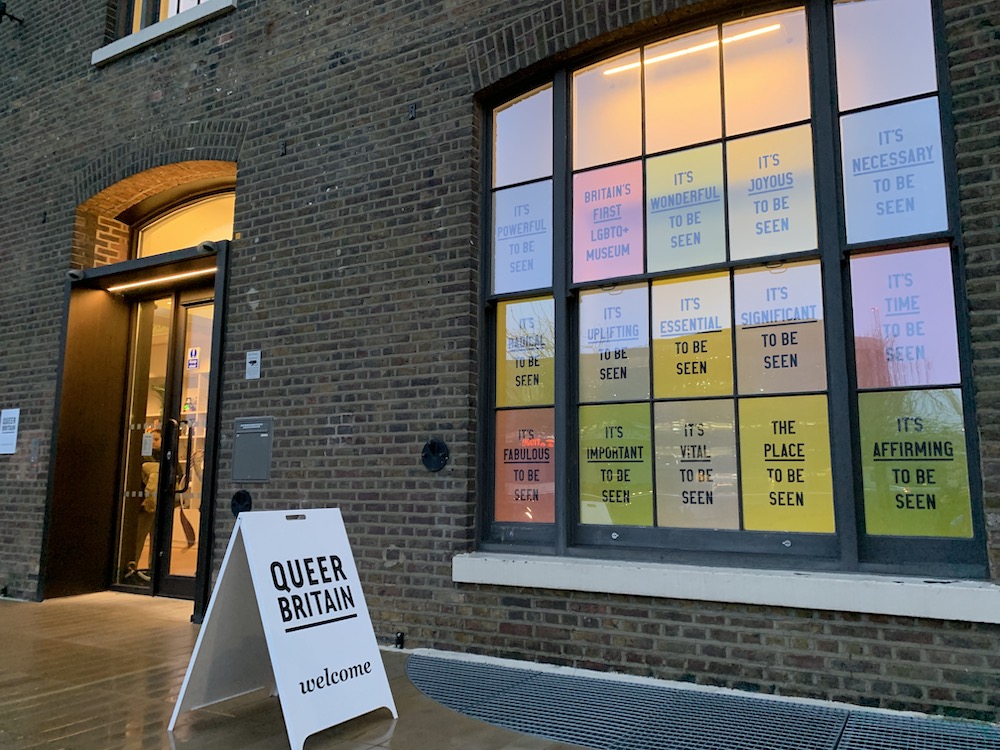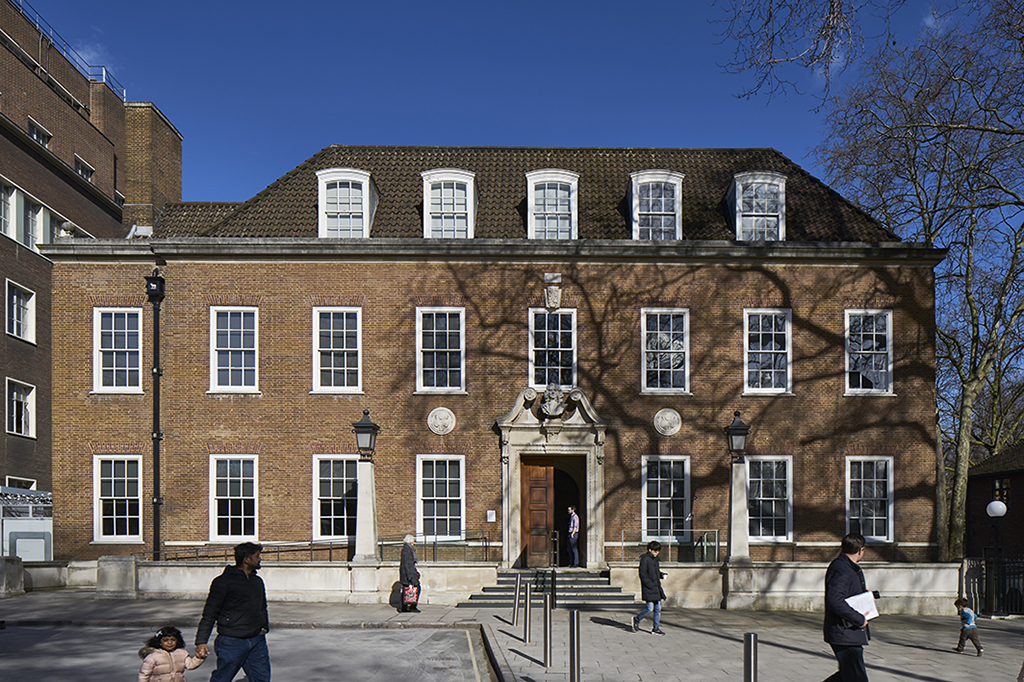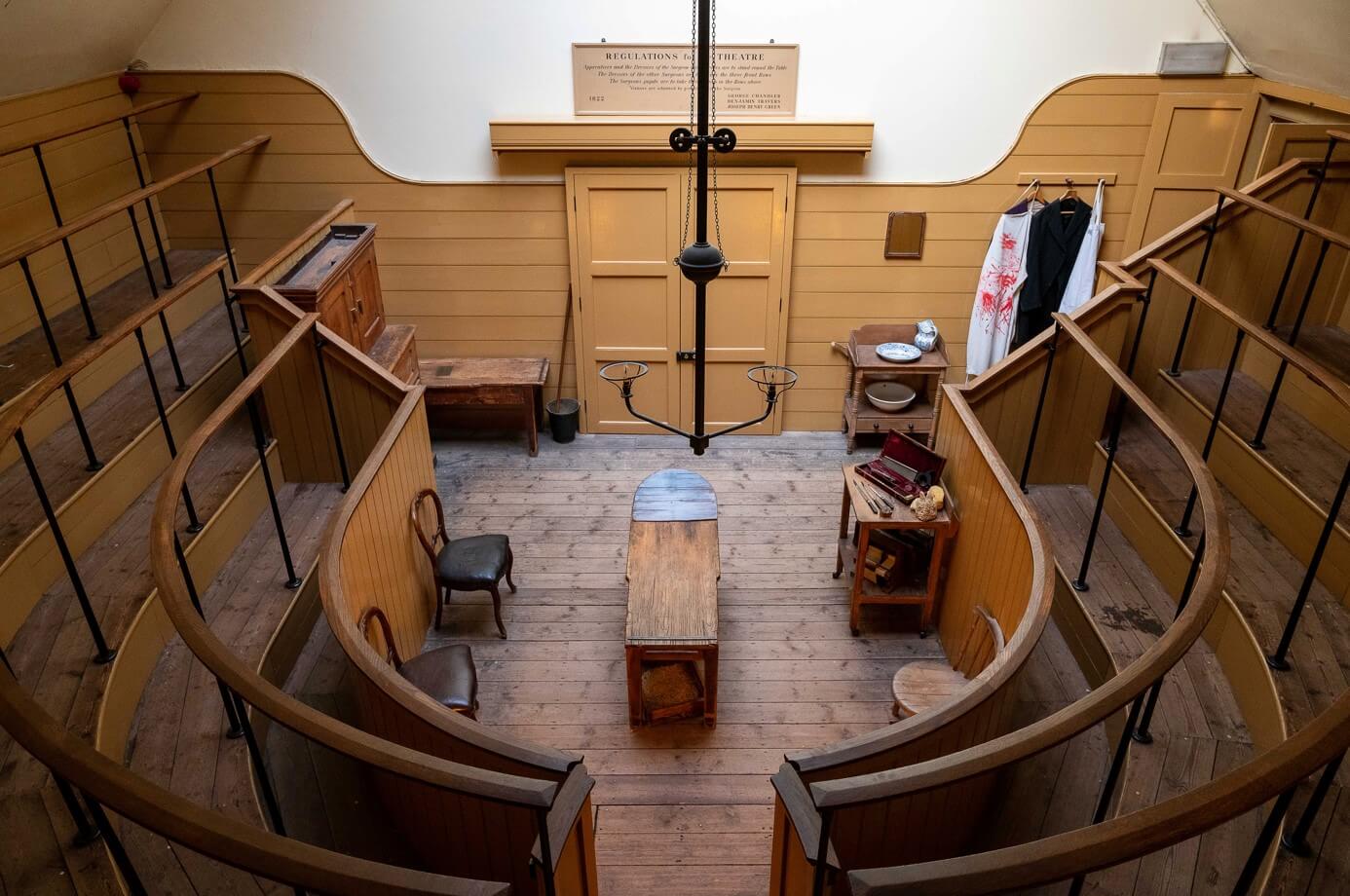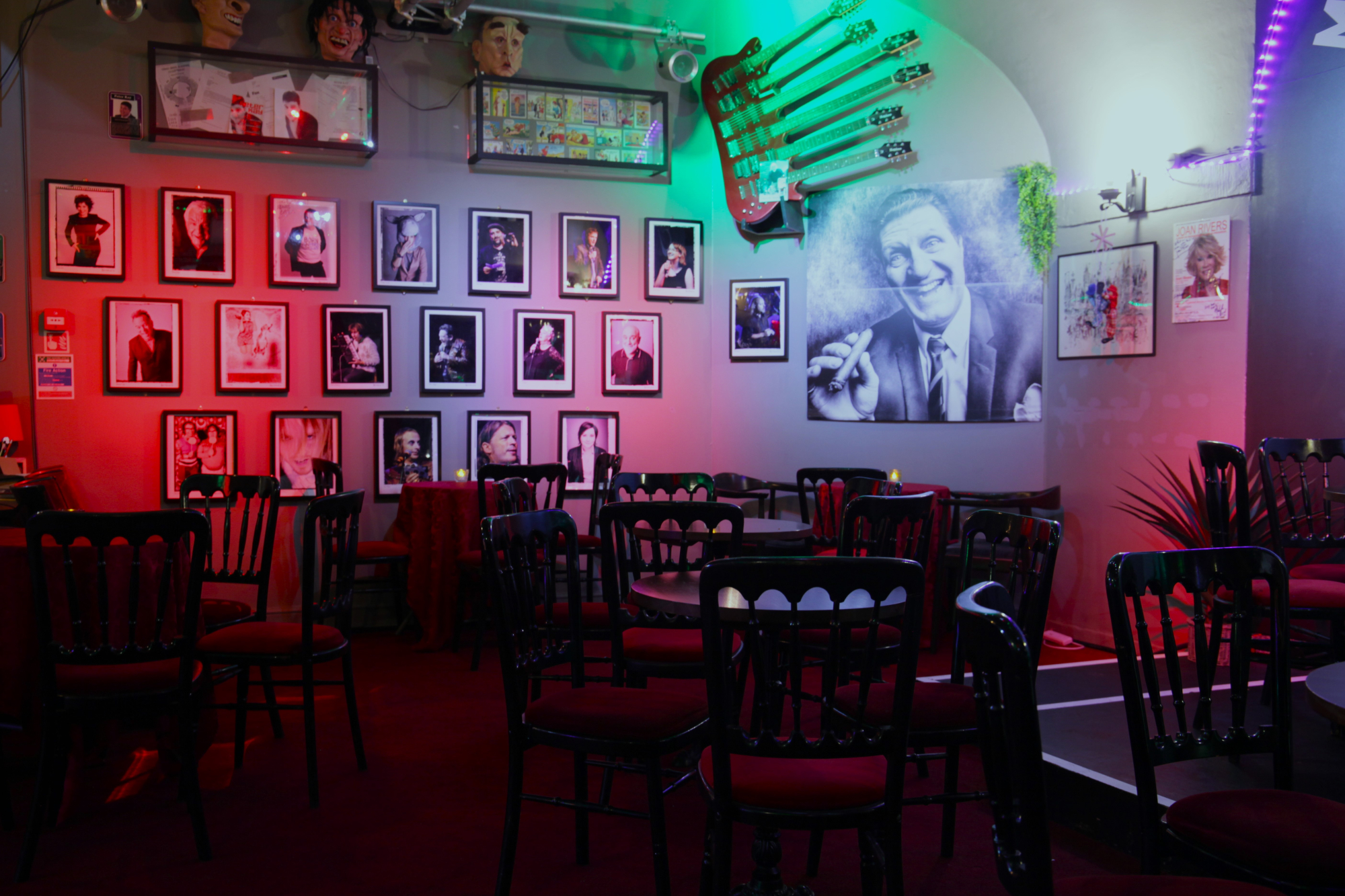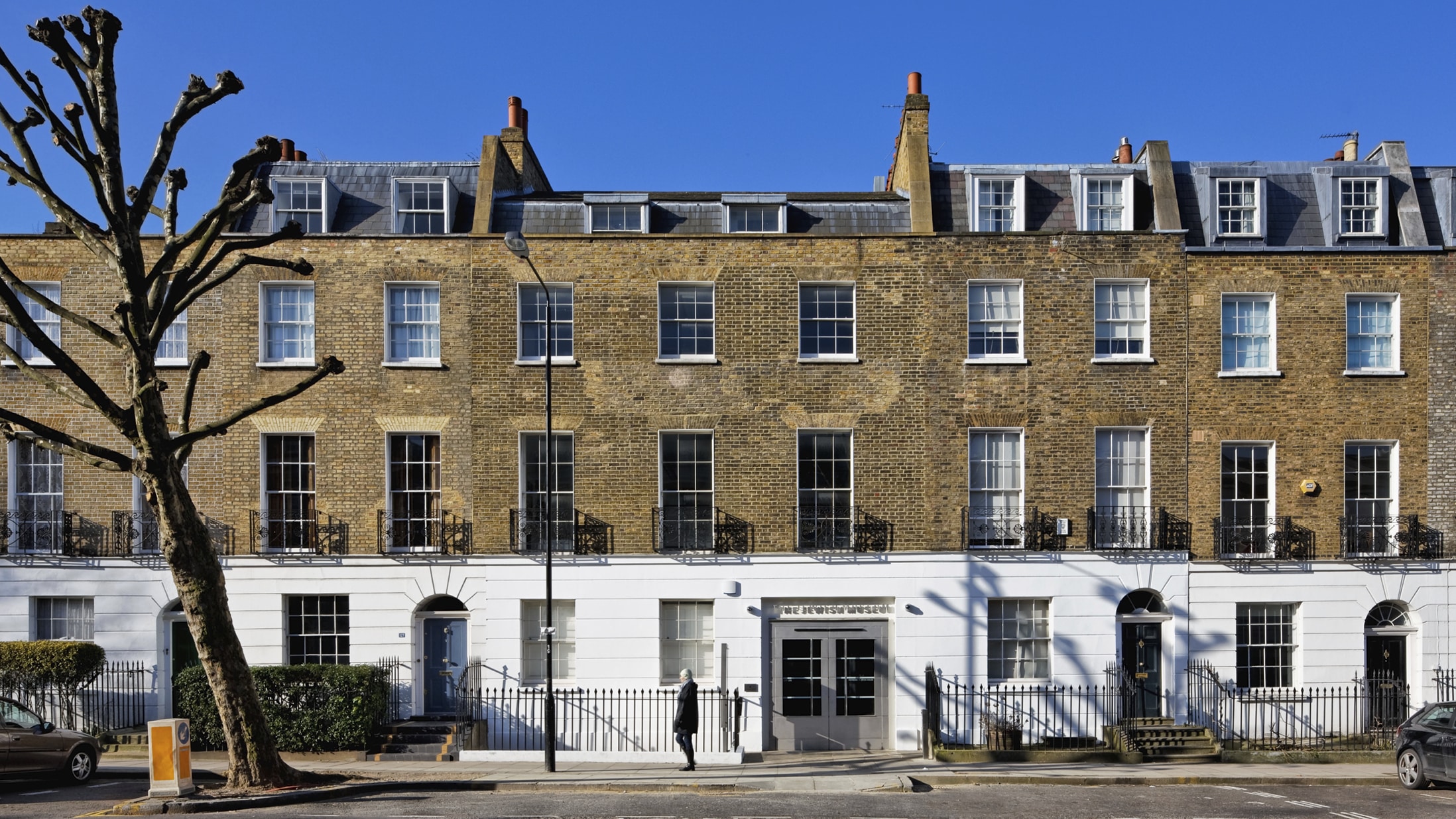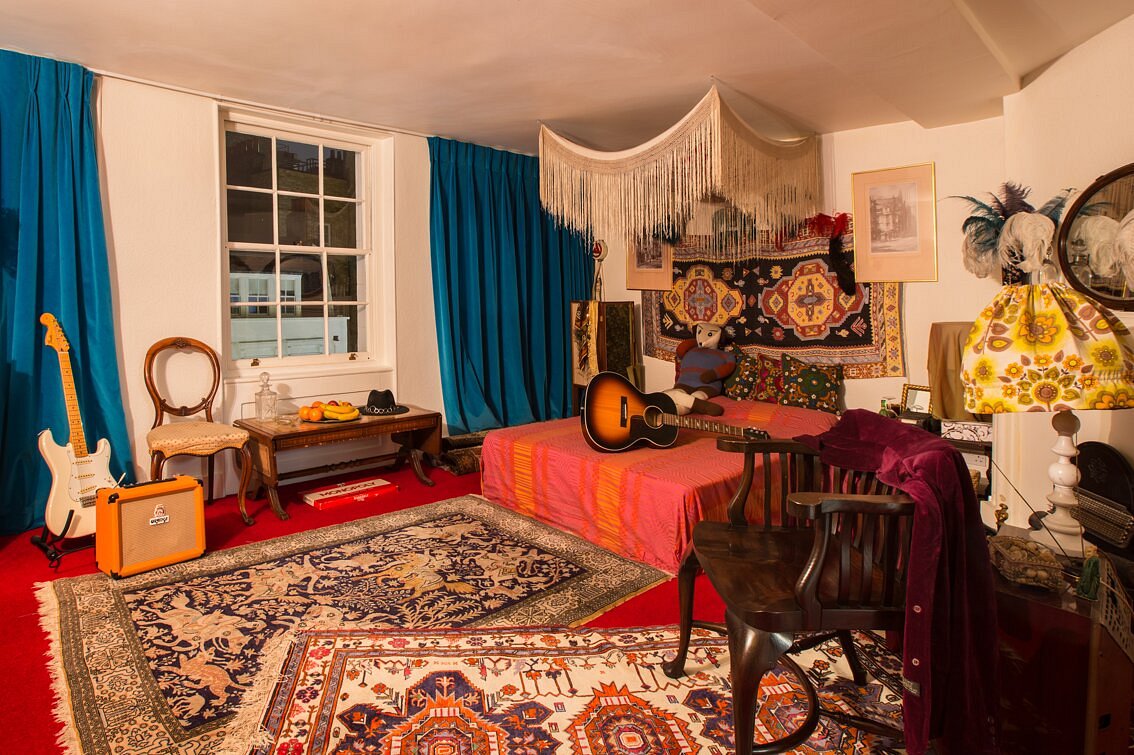33 Top Museums In London You Won't Want To Miss In 2025
Visiting London? Don’t miss the top museums! See world-class art, historic artifacts, and cutting-edge exhibits. Find best options here.
Mar 02, 202528K Shares475.2K Views
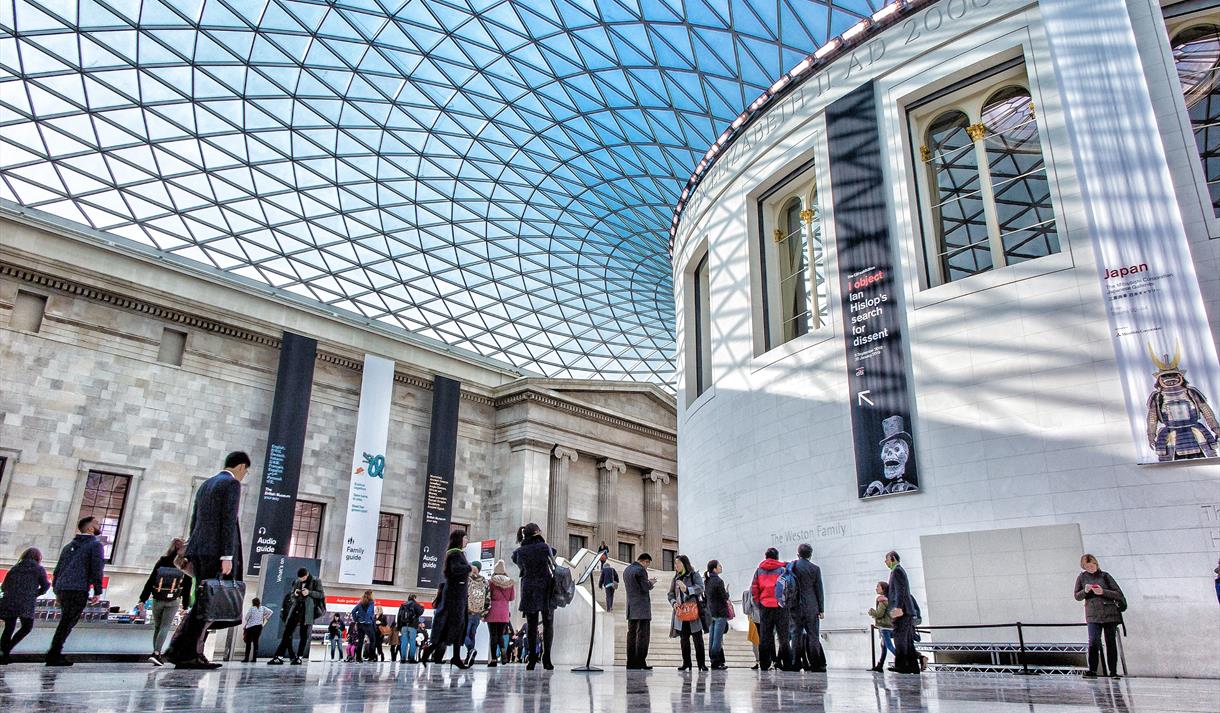
London is a city steeped in history, art, and culture, and nowhere is this more evident than in its world-renowned museums. From ancient artifacts to cutting-edge contemporary art, London’s museums offer an unparalleled opportunity to explore the richness of human creativity and knowledge.
This guide will take you on a journey through the top museums in London, ensuring you don’t miss the cultural treasures that define this vibrant city.
1. The British Museum
Founded in 1753, the British Museumis one of the world’s most comprehensive collections of human history. Its neoclassical architecture and vast galleries house over eight million artifacts spanning continents and millennia. From ancient civilizations to modern anthropology, the museum showcases the story of humanity through unparalleled exhibits.
Must-See Exhibits
- Rosetta Stone- The key to deciphering Egyptian hieroglyphs, one of the museum’s most famous artifacts.
- Elgin Marbles- Sculptures from the Parthenon in Athens, sparking ongoing debate over cultural ownership.
- Egyptian Mummies- A vast collection detailing ancient burial practices and beliefs in the afterlife.
- The Lewis Chessmen- A set of medieval chess pieces carved from walrus ivory.
Tips For Visiting
The British Museum is one of London’s most popular attractions, so it’s best to visit early in the day or late in the afternoon to avoid the largest crowds. Admission is free, but guided tours and audio guides are available for a deeper understanding of the exhibits. Don’t miss the museum’s special exhibitions, which often feature rare and significant objects from around the world.
Practical Information:
- Location:Great Russell St, WC1B 3DG
- Hours:Daily 10:00 AM – 5:00 PM (Fridays until 8:30 PM)
- Admission:Free (some special exhibitions require tickets)
- Nearest Tube:Tottenham Court Road, Holborn
2. The National Gallery
Established in 1824, the National Gallery is home to one of the finest collections of European paintings, spanning the 13th to 20th centuries. Its elegant building in Trafalgar Square serves as a cultural beacon, attracting millions of visitors each year.
Must-See Exhibits
- Van Gogh’s "Sunflowers"- A vibrant, emotionally charged masterpiece.
- Turner’s "The Fighting Temeraire"- A stunning maritime painting symbolizing Britain’s naval history.
- Da Vinci’s "The Virgin of the Rocks"- A prime example of Renaissance art and technique.
- Monet’s "The Water Lily Pond"- A breathtaking impressionist work.
Why Go?
The National Gallery is an unmissable destination for art lovers. Its vast collection allows visitors to trace the evolution of European art, from medieval religious paintings to iconic impressionist works. Free entry and guided tours make it an enriching yet accessible experience.
Practical Information:
- Location:Trafalgar Square, London WC2N 5DN
- Opening Hours:Daily, 10:00 AM - 6:00 PM (Fridays until 9:00 PM)
- Admission:Free (special exhibitions may require tickets)
- Transportation:Nearest tube stations: Charing Cross, Leicester Square
3. The Victoria And Albert Museum (V&A)
The V&Ais the world’s leading museum of art, design, and fashion, boasting an eclectic mix of decorative arts, textiles, and historical artifacts. With over 2.3 million objects, its collection spans 5,000 years of human creativity.
Must-See Exhibits
- The Cast Courts- Life-size plaster replicas of famous sculptures, including Michelangelo’s David.
- Jewelry Gallery- A dazzling collection of historic and contemporary jewelry.
- Fashion Gallery- Showcasing styles from the Renaissance to modern haute couture.
- Tipu’s Tiger- A mechanical 18th-century masterpiece from India.
Why Go?
The V&A is an essential visit for anyone interested in design and craftsmanship. Its diverse collection offers an unparalleled look at fashion, sculpture, and decorative arts from across the globe. The museum’s beautiful architecture and tranquil courtyard café enhance the experience.
Practical Information:
- Location:Cromwell Road, London SW7 2RL
- Opening Hours:Daily, 10:00 AM - 5:45 PM (Fridays until 10:00 PM)
- Admission:Free (special exhibitions may require tickets)
- Transportation:Nearest tube stations: South Kensington, Gloucester Road
4. The Natural History Museum
Housed in a stunning Romanesque building, the Natural History Museum offers a fascinating look at the natural world, from prehistoric creatures to rare gemstones. Its interactive displays make it a favorite among families.
Must-See Exhibits
- Hope the Blue Whale- A stunning life-sized skeleton in the grand Hintze Hall.
- Dinosaur Gallery- Featuring an animatronic T-Rex and real fossils.
- The Vault- A collection of rare and valuable gemstones.
- Earthquake Simulator- Experience real seismic activity firsthand.
Why Go?
The museum praises for its engaging exhibits and hands-on learning experiences. Whether you’re admiring a towering dinosaur skeleton or exploring the deep sea in VR, there’s something for every age group.
Practical Information:
- Location:Cromwell Road, London SW7 5BD
- Opening Hours:Daily, 10:00 AM - 5:50 PM
- Admission:Free (special exhibitions may require tickets)
- Transportation:Nearest tube stations: South Kensington
5. The Tate Modern
The Tate Modern is London’s premier museum of modern and contemporary art. Located on the South Bankof the River Thames in a former power station, the Tate Modern is as much an architectural landmark as it is a cultural institution.
Must-See Exhibits
- The Turbine Hall- Large-scale interactive installations.
- Picasso’s "Weeping Woman"- A striking cubist masterpiece.
- Duchamp’s "Fountain"- A thought-provoking modern artwork.
Tips For Modern Art Lovers
The Tate Modern is free to enter, although there is a charge for special exhibitions. The museum’s riverside location makes it an ideal stop on a day of sightseeing along the South Bank, so consider combining your visit with a walk along the Thames or a visit to the nearby Shakespeare’s Globe.
Practical Information:
- Location:Bankside, London SE1 9TG
- Opening Hours:Daily, 10:00 AM - 6:00 PM (Fridays and Saturdays until 10:00 PM)
- Admission:Free (special exhibitions may require tickets)
- Transportation:Nearest tube stations: Blackfriars, Southwark, London Bridge
6. The Science Museum
The Science Museum, also located in South Kensington, is one of London’s most popular attractions, offering a hands-on exploration of science, technology, and medicine. With interactive exhibits and fascinating displays, the museum makes learning fun for visitors of all ages.
Must-See Exhibits
- Apollo 10 Command Module- A real spacecraft used in NASA’s missions.
- Stephenson’s Rocket- One of the first steam locomotives.
- Wonderlab- An interactive area for children and families.
Family-Friendly Tips
The Science Museum is perfect for families, with plenty of interactive exhibits that encourage hands-on learning. The museum also offers free admission, although some special exhibitions may require tickets. Be sure to check out the IMAX cinema, which screens educational films that complement the museum’s exhibits.
Practical Information:
- Location:Exhibition Rd, SW7 2DD
- Opening Hours:Daily, 10:00 AM - 6:00 PM
- Admission:Free (some exhibitions require tickets)
- Transportation:Nearest tube stations: South Kensington
7. The Imperial War Museum
The Imperial War Museum (IWM) is dedicated to telling the stories of those who have lived, fought, and died in conflicts involving Britain and the Commonwealth since the First World War. The museum’s exhibits explore the impact of war on people and society, making it a powerful and thought-provoking experience.
Key Highlights
- The World War I and II Exhibitions -These extensive exhibitions cover the causes, events, and consequences of the two world wars, with a focus on the human experience of conflict. The exhibits include personal stories, photographs, and artifacts that bring history to life.
- The Holocaust Exhibition -This permanent exhibition provides a comprehensive and moving account of the Holocaust, with testimonies from survivors, historical documents, and objects from the concentration camps.
- The Spitfire and Other Military Artifacts -The museum’s collection includes iconic military vehicles, aircraft, and weapons, including a Spitfire fighter plane and a Sherman tank. These artifacts offer a tangible connection to the history of warfare.
Why Go? The museum is a must-visit for its deeply moving and educational exhibits.
Practical Information:
- Location:Lambeth Rd, SE1 6HZ
- Hours:Daily 10:00 AM - 6:00 PM
- Admission:Free
- Nearest Tube:Lambeth North, Elephant & Castle
8. Churchill War Rooms
Beneath the bustling streets of Westminster lies the Churchill War Rooms, the underground nerve center where Prime Minister Winston Churchill and his government directed Britain’s efforts during World War II. The dimly lit corridors, preserved map rooms, and Churchill’s personal quarters offer a gripping look into wartime strategy and resilience.
Must-See Exhibits
- Map Room- Left exactly as it was on the day the war ended.
- Churchill’s Bedroom & Desk- A glimpse into the leader’s working and resting space.
- The Churchill Museum- Interactive displays featuring recordings of Churchill’s speeches and personal items.
Why Go?
Churchill War Rooms ranks among the top historical sites in London, offering an immersive and thought-provoking experience. Visitors leave with a deeper understanding of Churchill’s leadership and the challenges of wartime Britain.
Practical Information:
- Location:King Charles Street, London SW1A 2AQ
- Opening Hours:Daily, 9:30 AM - 6:00 PM
- Admission:Check website for ticket prices.
- Transportation:Nearest tube stations: Westminster
9. Museum Of London
For a sweeping overview of London’s transformation from Roman outpost to modern metropolis, the Museum of Londonis unparalleled. Its vast collection covers prehistoric settlements, medieval plagues, and contemporary city life.
Must-See Exhibits
- Roman London Gallery- Artifacts from Londinium, the city's ancient roots.
- Great Fire of London Exhibit- A vivid retelling of the 1666 disaster.
- Victorian Street- A life-sized reconstruction of a 19th-century London street.
- 1960s and Beyond- An engaging look at London’s modern evolution.
Why Go?
This museum is an essential stop for history lovers. Its interactive exhibits and storytelling make London’s rich past feel alive and accessible.
Practical Information:
- Location:150 London Wall, London EC2Y 5HN
- Opening Hours:Wednesday - Sunday 10:00 AM - 5:00 PM
- Admission:Free
- Transportation:Nearest tube stations: St. Paul's, Barbican, Moorgate
10. Tower Of London
Though primarily a historic landmark, the Tower of Londonfunctions as a living museum showcasing over 1,000 years of British history. From its origins as a Norman fortress to its infamous role as a prison and execution site, the tower’s chilling past is brought to life through exhibits and guided Yeoman Warder (Beefeater) tours.
Must-See Exhibits
- The Crown Jewels- An awe-inspiring display of royal regalia.
- The Bloody Tower- The supposed site of the murder of the Princes in the Tower.
- The Medieval Palace- A reconstruction of royal lodgings.
Why Go?
Tower of London is one of the city’s most significant historical sites. While it’s not a traditional museum, its deep historical connections and world-famous artifacts make it an essential visit.
Practical Information:
- Location:Tower Hill, London EC3N 4AB
- Opening Hours:Tuesday-Saturday 9:00 AM – 4:30 PM, Sunday-Monday 10:00 AM – 4:30 PM
- Admission:Check website for ticket prices.
- Transportation:Nearest tube station: Tower Hill
11. Sir John Soane’s Museum
Once the home of the celebrated architect Sir John Soane, this museum is a treasure trove of art, antiquities, and eccentric curiosities. The house remains largely untouched since Soane’s death in 1837, offering a glimpse into the mind of a collector with an eye for the extraordinary.
Must-See Exhibits
- Hogarth’s "A Rake’s Progress"- A famous series of paintings on morality and downfall.
- The Sarcophagus of Seti I- A stunning ancient Egyptian artifact.
- Hidden Mirrors & Trick Doors- Ingenious architectural illusions.
Why Go?
The museum is appreciated for its intimate and atmospheric setting. Visitors feel as though they’ve stepped into a time capsule filled with artistic and historical wonders.
Practical Information:
- Location:13 Lincoln's Inn Fields, London WC2A 3BP
- Opening Hours:Wednesday–Sunday, 10am–5pm. Closed Mondays and Tuesdays.
- Admission:Free
- Transportation:Nearest tube stations: Holborn, Chancery Lane
12. Dennis Severs’ House
More than just a museum, Dennis Severs’ Houseis an immersive theatrical experience. Created by the late artist Dennis Severs, this 18th-century home is designed to feel as though its Huguenot silk-weaving inhabitants just stepped out, leaving behind half-finished meals and flickering candlelight.
Must-See Exhibits
- Candlelit Rooms- Evoking different eras of London life.
- Soundscapes & Scents- Designed to create a sensory experience.
- The Silence Rule- Visitors are encouraged to absorb the atmosphere in hushed reverence.
Why Go?
This museum is one of the most unique and eerie museum experiences in London. It’s history brought to life in a way that’s theatrical and unforgettable.
Practical Information:
- Location:18 Folgate Street, London E1 6BX
- Opening Hours:Check website for tour
- Transportation:Nearest tube stations: Liverpool Street, Aldgate East
13. London Museum Of Docklands
Tucked away in a historic warehouse, the London Museum of Docklandschronicles the city’s maritime past, from its role as a global trading hub to its darker history tied to the transatlantic slave trade.
Must-See Exhibits
- Sailortown- A recreation of 19th-century East End dockland streets.
- London, Sugar & Slavery- A powerful exploration of Britain’s involvement in the slave trade.
- World War II & The Blitz- Stories of how the docks played a role in wartime resilience.
Why Go?
This museum is an underrated gem, offering deep insights into the economic and social forces that shaped London.
Practical Information:
- Location:No.1 Warehouse, West India Quay, London E14 4AL
- Opening Hours:Daily 10am - 5pm.
- Admission:Free (charge for the Mudlarks Gallery)
- Transportation:Nearest transport: West India Quay DLR station.
14. Tate Britain
Home to the world’s most comprehensive collection of British art, Tate Britaintraces the evolution of the nation’s visual culture from the 1500s to the present. Unlike its sibling, Tate Modern, this museum focuses on traditional and contemporary British art, featuring works by Turner, Constable, and the Pre-Raphaelites.
Must-See Exhibits
- J.M.W. Turner Collection- A breathtaking display of light and movement in British landscapes.
- The Pre-Raphaelite Paintings- Vibrant, detail-rich depictions of mythology and literature.
- Modern British Art- Works by Francis Bacon, Henry Moore, and contemporary artists.
Why Go?
Tate Britain is the ultimate destination for British art lovers, offering a journey through the country's artistic legacy, from romantic landscapes to thought-provoking contemporary pieces.
Practical Information:
- Location:Millbank, London SW1P 4RG
- Opening Hours:Daily 10:00 AM–6:00 PM
- Admission:Free (special exhibitions may require tickets)
- Transportation:Nearest tube stations: Pimlico, Vauxhall
15. The Design Museum
For those fascinated by the intersection of creativity and functionality, the Design Museumis a must-visit. Covering architecture, fashion, product design, and digital innovation, the museum showcases how design shapes the world we live in.
Must-See Exhibits
- Permanent Collection- A showcase of revolutionary designs, from early typography to cutting-edge tech.
- Fashion and Textile Displays- Exploring how style and material innovation define different eras.
- Contemporary Design Trends- A rotating selection of exhibitions covering AI, sustainability, and urban planning.
Why Go?
The Design Museum is one of the most forward-thinking cultural institutions in London, providing insight into how design influences everyday life.
Practical Information:
- Location:224-238 Kensington High Street, London W8 6AG
- Opening Hours:Mon-Thur 10:00 AM – 5:00 PM, Fri-Sun 10:00 AM – 6:00
- Admission:Varies (check website for specific exhibition pricing)
- Transportation:Nearest tube stations: High Street Kensington
16. The Royal Academy Of Arts
Founded in 1768, the Royal Academy of Arts (RA)is an artist-run institution dedicated to promoting visual arts. Known for its blockbuster exhibitionsand prestigious Summer Exhibition, it remains a pillar of London’s art scene.
Must-See Exhibits
- The Summer Exhibition- A vibrant, open-call showcase of contemporary works.
- Michelangelo’s "Taddei Tondo"- A rare marble relief by the Renaissance master.
- Rotating Contemporary Exhibitions- Featuring global artists, from Ai Weiwei to Marina Abramović.
Why Go?
Time Out describes the RA as the beating heart of London's fine art scene, hosting world-class exhibitions that blend classical and modern perspectives.
Practical Information:
- Location:Burlington House, Piccadilly, London W1J 0BD
- Opening Hours:Daily 10:00 AM - 6:00 PM, Friday (10:00 AM - 9:00 PM)
- Admission:Varies (check website for specific exhibition pricing)
- Transportation:Nearest tube stations: Piccadilly Circus, Green Park
17. National Portrait Gallery
After a multi-year renovation, the National Portrait Galleryhas reopened with a fresh perspective on portraiture. This museum brings history to life through paintings, photographs, and digital artdepicting Britain’s most influential figures.
Must-See Exhibits
- The Tudor Gallery- Featuring portraits of Henry VIII and Elizabeth I.
- The Victorian Room- Showcasing prominent figures of the 19th century.
- Contemporary Icons- Striking portraits of modern-day cultural leaders.
Why Go?
This museum calls as "London's most intimate encounter with history,"offering visitors a unique way to engage with British heritage through personal stories and faces.
Practical Information:
- Location:St Martin's Place, London WC2H 0HE
- Opening Hours:Daily 10:00 AM - 6:00 PM, Fri-Satur (10:00 AM - 9:00 PM)
- Admission:Free (special exhibitions may require tickets)
- Transportation:Nearest tube stations: Charing Cross, Leicester Square
18. The Wallace Collection
Tucked away in a grand townhouse, The Wallace Collectionoffers an opulent glimpse into 18th-century European art, furniture, and armor. The museum is renowned for its Rococo masterpiecesand one of the finest collections of French decorative arts outside of France.
Must-See Exhibits
- Fragonard’s "The Swing"- A playful and romantic Rococo painting.
- Exquisite French Furniture- Lavish pieces once owned by nobility.
- The Armoury- An extensive collection of European and Oriental arms.
Why Go?
The Wallace Collection appreciated for its hidden-gem status, offering an intimate and luxurious setting to enjoy world-class art.
Practical Information:
- Location:Hertford House, Manchester Square, London W1U 3BN
- Opening Hours:Daily 10:00 AM - 5:00 PM
- Admission:Free (special exhibitions may require tickets)
- Transportation:Nearest tube stations: Bond Street, Marble Arch
19. Dulwich Picture Gallery
As England’s first purpose-built public art gallery, Dulwich Picture Galleryis home to an exceptional collection of Baroque masterpieces, including works by Rembrandt, Poussin, and Van Dyck.
Must-See Exhibits
- Rembrandt’s Self-Portraits- Intimate studies of the master’s evolving style.
- Poussin’s Mythological Scenes- Dramatic and richly detailed.
- The Museum’s Architecture- Designed by Sir John Soane, blending light and space beautifully.
Why Go?
Dulwich Picture Gallery "a cultural retreat outside the city’s chaos,"perfect for those looking to enjoy art in a peaceful setting.
Practical Information:
- Location:Gallery Road, Dulwich, London SE21 7AD
- Opening Hours:Wednesday-Sunday 10:00 AM–5:00 PM
- Admission:Check website for prices.
- Transportation:Nearest train station: West Dulwich
20. Leighton House
A hidden gem in London’s art scene, Leighton Housewas once the home of Victorian painter Frederic Leighton. This stunning museum blends Middle Eastern influences with classical art, featuring vibrant tiles, golden domes, and intricate mosaics.
Must-See Exhibits
- The Arab Hall- A dazzling, tile-covered space inspired by Middle Eastern architecture.
- Leighton’s Studio- Where the artist created his grand historical paintings.
- Victorian Art- A collection of works from the Aesthetic Movement.
Why Go?
Leighton House "London’s most unexpected artistic treasure,"offering a one-of-a-kind fusion of global influences.
Practical Information:
- Location:12 Holland Park Road, London W14 8LZ
- Opening Hours:Wednesday – Monday, 10:00 AM – 5:30 PM
- Admission:Check website for prices.
- Transportation:Nearest tube station: Holland Park
21. Fashion And Textile Museum
Founded by designer Zandra Rhodes, the Fashion and Textile Museumcelebrates the creativity of fashion, fabric, and textile designfrom past to present.
Must-See Exhibits
- The Evolution of British Fashion- From 1960s Mod to contemporary couture.
- Sustainable Textiles- Exploring eco-friendly innovations in fashion.
- Designer Spotlights- Rotating exhibitions featuring icons like Vivienne Westwood.
Why Go?
This museum "London’s most stylish cultural stop,"appealing to fashion lovers and creatives alike.
Practical Information:
- Location:83 Bermondsey Street, London SE1 3XF
- Opening Hours:Tuesday–Saturday, 11am–6pm; Sunday, 11am–6pm. Closed Mondays.
- Admission:Varies (check website for specific exhibition pricing)
- Transportation:Nearest tube station: London Bridge
22. Grant Museum Of Zoology
For those with a fascination for the animal kingdom, the Grant Museum of Zoologyis a hidden treasure. This compact yet extraordinary museum houses over 68,000 zoological specimens, including rare and extinct creatures. As part of University College London, it offers an up-close look at evolutionary biology and anatomical diversity.
Must-See Exhibits
- Quagga Skeleton- One of the world’s rarest specimens, belonging to an extinct zebra species.
- Jar of Moles- A mysterious and oddly captivating collection of preserved moles.
- Dodo Bones- A glimpse into one of history’s most famous extinct species.
- Microscopic Wonders- Slides featuring tiny organisms, offering insight into unseen life forms.
Why Go?
The Grant Museum of Zoologyas "London’s most intriguing natural history museum,"packed with bizarre and fascinating specimens that appeal to both scientists and the curious-minded.
Practical Information:
- Location:Rockefeller Building, UCL, London WC1E 6DE
- Opening Hours:Check website for current opening hours.
- Admission:Free
- Transportation:Nearest tube stations: Euston Square, Russell Square, Goodge Street
23. Horniman Museum And Gardens
Blending natural history, anthropology, and musical heritage, the Horniman Museumis one of London’s most family-friendly cultural spots. The museum’s eclectic collection ranges from taxidermy animals and ancient artifactsto a stunning aquariumand interactive gardens.
Must-See Exhibits
- The Famous Walrus- An overstuffed taxidermy walrus that has become the museum’s mascot.
- World Musical Instruments Collection- Featuring over 8,000 instruments from across cultures.
- Natural History Gallery- Showcasing skeletons, fossils, and preserved animals.
- Aquarium & Butterfly House- A mesmerizing look at marine and insect life.
Why Go?
The Horniman Museum is "London’s most charming and underrated museum,"offering a perfect mix of science, culture, and outdoor beauty with its gardens and panoramic city views.
Practical Information:
- Location:100 London Road, Forest Hill, London SE23 3PQ
- Opening Hours:Daily 10:00 AM – 5:30 PM
- Admission:Free (some exhibitions may charge)
- Transportation:Nearest Overground station: Forest Hill
24. Royal Greenwich Observatory
The Royal Greenwich Observatoryis the epicenter of global timekeeping and astronomical discovery. Established in 1675, it’s home to the Prime Meridian (0° longitude)and offers unparalleled insights into space science, navigation, and time measurement.
Must-See Exhibits
- Stand on the Prime Meridian Line- The official divide between the Eastern and Western Hemispheres.
- Great Equatorial Telescope- One of the largest historic telescopes in the world.
- John Harrison’s Clocks- Revolutionary timepieces that solved the longitude problem.
- The Astronomy Centre- Interactive exhibits on black holes, planets, and cosmic exploration.
Why Go?
The Royal Greenwich Observatory"the most historic place in London for stargazers,"offering breathtaking views of the night sky and a deep dive into the evolution of astronomy.
Practical Information:
- Location:Blackheath Avenue, Greenwich, London SE10 8XJ
- Opening Hours:Check website for varying hours.
- Admission:Check website for prices and available tours.
- Transportation:Nearest DLR station: Cutty Sark for Maritime Greenwich; Nearest rail station: Greenwich
25. The Postal Museum
For a fascinating look at communication history, The Postal Museumshowcases the evolution of Britain's postal system-from pigeon posts and mail coachesto modern innovations. One of its biggest highlights is the Mail Rail, an underground train ride through a secret 100-year-old postal tunnel beneath London.
Must-See Exhibits
- The Mail Rail Ride- A subterranean journey through London’s forgotten postal tunnels.
- Victorian Postal Reforms- See how the Penny Black revolutionized mail delivery.
- Rare Stamps & Letters- Including correspondence from famous historical figures.
- Interactive Sorting Office- Let visitors experience what it was like to sort letters by hand.
Why Go?
The Postal Museum offers a unique perspective on British history and the evolution of communication.
Paractical Information
- Location:15-20 Phoenix Place, London WC1X 0DA
- Opening Hours:Monday Closed. Tuesday-Sunday, 10am-5pm.
- Admission:Check website for prices. Includes Mail Rail
- Transportation:Nearest Stations: Farringdon (Tube and National Rail), Chancery Lane (Tube)
26. London Transport Museum
The London Transport Museumtakes visitors on a journey through the evolution of the city’s transport system-from horse-drawn carriages to the modern Tube. Located in Covent Garden, this family-friendly museum is packed with vintage vehicles, interactive displays, and historical insights into how public transport shaped London.
Must-See Exhibits
- Restored Victorian and Edwardian Carriages- Step inside beautifully preserved train cars.
- Iconic London Buses- Explore the famous red Routemaster buses.
- Underground Simulator- Experience what it’s like to operate a Tube train.
- Poster and Graphic Design Collection- A visual history of London’s transport advertising.
Why Go?
The London Transport Museum is a must-visit for transport enthusiasts and anyone interested in the history of London.
Practical Information:
- Location:Covent Garden Piazza, London WC2E 7BB
- Opening Hours:Daily 10:00 AM – 6:00 PM
- Admission:Check website for prices.
- Transportation:Nearest tube station: Covent Garden
27. Museum Of Brands
The Museum of Brands, located in Notting Hill, is a celebration of consumer culture and the history of branding. Through a vast collection of packaging, advertisements, and other memorabilia, the museum offers a nostalgic look at the evolution of familiar brands.
Key Highlights:
- Time Tunnel:Explore a chronological display of packaging and advertising, showing how brands have changed over time.
- Nostalgic Exhibits:Relive your childhood through exhibits featuring classic toys, games, and confectionery.
Why Go?The Museum of Brands is a fun and fascinating experience for anyone interested in advertising, marketing, and the cultural impact of brands.
Practical Information:
- Location:111-117 Lancaster Road, London W11 1QT
- Opening Hours:Check website for current opening hours.
- Admission:Check website for prices.
- Transportation:Nearest tube station: Ladbroke Grove
28. Queer Britain
Queer Britain, located in King's Cross, is the UK's first national museum dedicated to LGBTQ+ history and culture. Through exhibitions, events, and archival materials, the museum celebrates the stories, struggles, and achievements of the queer community.
Key Highlights:
- Exhibitions:Explore the rich and diverse history of LGBTQ+ people in Britain.
- Archival Collections:Discover personal stories and historical documents that illuminate the queer experience.
Why Go?Queer Britain is a vital and important museum, providing a space for celebrating queer identity and preserving queer history.
Practical Information:
- Location:2 Granary Square, London N1C 4BH
- Opening Hours:Wednesday – Sunday, 12:00 PM – 6:00 PM
- Admission:Free (donations welcome)
- Transportation:Nearest tube station: King's Cross St. Pancras
29. Foundling Museum
The Foundling Museum, located in Bloomsbury, tells the story of the Foundling Hospital, London's first home for abandoned children. Through art, objects, and archival materials, the museum explores the lives of the children who were cared for at the hospital and the social history of foundlings in London.
Must-See Exhibits
- Tokens of Love- Small objects left by mothers who gave up their children to the Foundling Hospital.
- William Hogarth’s Paintings- Artistic works supporting the hospital’s cause.
- Handel’s Music Collection- A tribute to composer George Frideric Handel, a patron of the hospital.
- Voices of the Foundlings- Personal stories of children raised in the institution.
Why Go?The Foundling Museum offers a unique and moving perspective on London's social history.
Practical Information:
- Location:40 Brunswick Square, London WC1N 1AZ
- Opening Hours:Tuesday – Saturday, 10:00 AM – 5:00 PM; Sunday 11:00 AM – 5:00 PM
- Admission:Check website for prices.
- Transportation:Nearest tube stations: Russell Square, Brunswick Square
30. Old Operating Theatre Museum And Herb Garret
The Old Operating Theatre Museum and Herb Garret, located near London Bridge, offers a fascinating and sometimes gruesome look at the history of medicine and surgery. Housed in a former operating theatre from the 19th century, the museum showcases the tools and techniques used before the advent of anesthesia and antiseptics.
Key Highlights
- Operating Theatre:See the restored operating theatre, complete with its tiered seating for students.
- Herb Garret:Explore the garret where medicinal herbs were stored and prepared.
Why Go?The Old Operating Theatre Museum is a must-visit for anyone interested in medical history.
Practical Information:
- Location:9a St Thomas Street, London SE1 9RY
- Opening Hours:Thursday – Sunday, 10:30 AM – 5:00 PM.
- Admission:Check website for prices.
- Transportation:Nearest tube station: London Bridge
31. Museum Of Comedy
The Museum of Comedy, located in Bloomsbury, celebrates the history of British comedy. Through exhibits, archival materials, and performances, the museum explores the diverse world of humor, from stand-up to sitcoms.
Key Highlights
- Collection of Comedy Memorabilia:See props, costumes, and scripts from classic British comedy shows.
- Performances and Events:Enjoy live comedy shows and other events at the museum.
Why Go?The Museum of Comedy is a must-visit for comedy fans and anyone interested in the history of British humor.
Practical Information:
- Location:St George's Church, Bloomsbury Way, London WC1A 2SR
- Opening Hours:Check website for current opening hours.
- Admission:Check website for prices.
- Transportation:Nearest tube station: Tottenham Court Road, Holborn
32. Jewish Museum London
The Jewish Museum London, located in Camden, explores the history and culture of Jewish people in Britain. Through exhibitions, artifacts, and personal stories, the museum offers insights into Jewish life, traditions, and contributions to British society.
Key Highlights
- Permanent Exhibitions:Explore the history of Jewish people in Britain and Jewish religious practices.
- The Holocaust Gallery:A dedicated space for remembering and learning about the Holocaust.
Why Go?The Jewish Museum London is a vital resource for understanding Jewish history and culture in Britain.
Practical Information:
- Location:Raymond Burton House, 129-131 Albert Street, London NW1 7NB
- Opening Hours:Check website for current opening hours.
- Admission:Check website for prices.
- Transportation:Nearest tube station: Camden Town
33. Handel & Hendrix House
Handel & Hendrix House, located in Mayfair, celebrates the lives and legacies of two musical giants: George Frideric Handel and Jimi Hendrix. Housed in the same building where they both lived, the museum offers a unique glimpse into their lives, music, and times.
Key Highlights
- Handel's Rooms:Explore the restored rooms where Handel composed some of his most famous works.
- Hendrix's Flat:See a recreation of the flat where Hendrix lived in the 1960s.
Why Go?Handel & Hendrix House is a must-visit for music lovers and anyone interested in the lives of these two iconic musicians.
Practical Information:
- Location:25 Brook Street, London W1K 4HB
- Opening Hours:Check website for current opening hours.
- Admission:Check website for prices.
- Transportation:Nearest tube stations: Bond Street, Oxford Circus
FAQs About London’s Top Museums
What Is The #1 Museum In London?
The British Museum is often considered the top museum in London due to its vast, world-famous collection, including the Rosetta Stone and Egyptian mummies.
What Is The Most Fun Museum In London?
The Science Museum and the Natural History Museum are among the most entertaining, offering hands-on exhibits, interactive displays, and immersive experiences.
What Is The Best Time Of Day To Visit London’s Museums?
Early mornings or late afternoons on weekdays are ideal for avoiding crowds. Off-peak seasons also offer a quieter experience.
Are There Any Free Museums In London Worth Visiting?
Yes, top museums like the British Museum, Natural History Museum, V&A, National Gallery, and Museum of London offer free admission.
How Long Should I Plan To Spend At Each Museum?
Most museums require at least 2–3 hours, while larger ones like the British Museum or V&A could take a full day to explore thoroughly.
Are There Guided Tours Available At London’s Top Museums?
Yes, many museums provide guided tours, some free and others for a fee. Audio guides are also available for self-paced exploration.
Quick Recap - Your Ultimate Guide To London’s Museums
London’s museums are a treasure trove of art, history, and culture, offering something for everyone. From the ancient artifacts of the British Museum to the cutting-edge design of the Design Museum, each museum provides a unique window into the world.
These cultural institutions are essential stops on any visit to the capital. So take your time, explore, and let London’s museums inspire you on your journey through this remarkable city.
Jump to
1. The British Museum
2. The National Gallery
3. The Victoria And Albert Museum (V&A)
4. The Natural History Museum
5. The Tate Modern
6. The Science Museum
7. The Imperial War Museum
8. Churchill War Rooms
9. Museum Of London
10. Tower Of London
11. Sir John Soane’s Museum
12. Dennis Severs’ House
13. London Museum Of Docklands
14. Tate Britain
15. The Design Museum
16. The Royal Academy Of Arts
17. National Portrait Gallery
18. The Wallace Collection
19. Dulwich Picture Gallery
20. Leighton House
21. Fashion And Textile Museum
22. Grant Museum Of Zoology
23. Horniman Museum And Gardens
24. Royal Greenwich Observatory
25. The Postal Museum
26. London Transport Museum
27. Museum Of Brands
28. Queer Britain
29. Foundling Museum
30. Old Operating Theatre Museum And Herb Garret
31. Museum Of Comedy
32. Jewish Museum London
33. Handel & Hendrix House
FAQs About London’s Top Museums
Quick Recap - Your Ultimate Guide To London’s Museums
Latest Articles
Popular Articles
